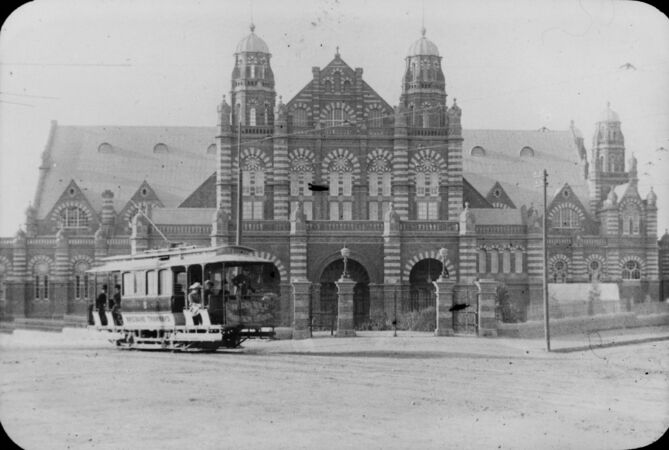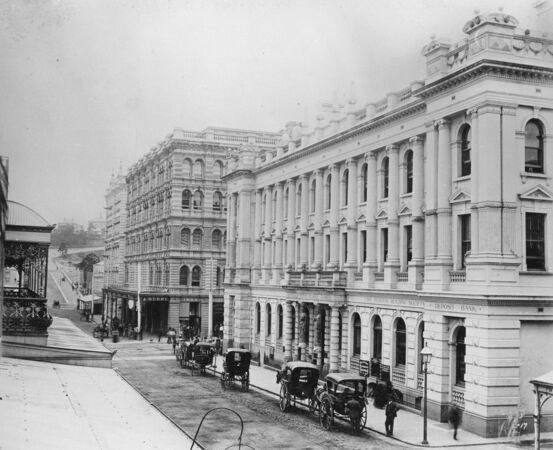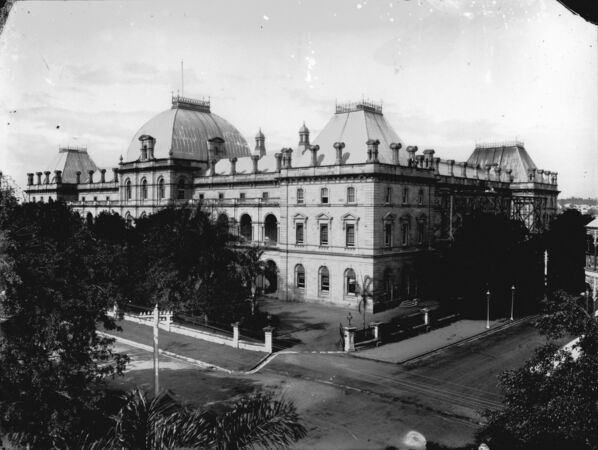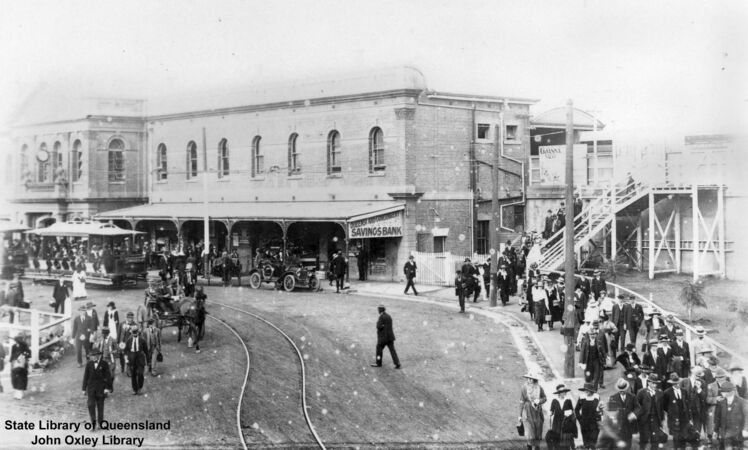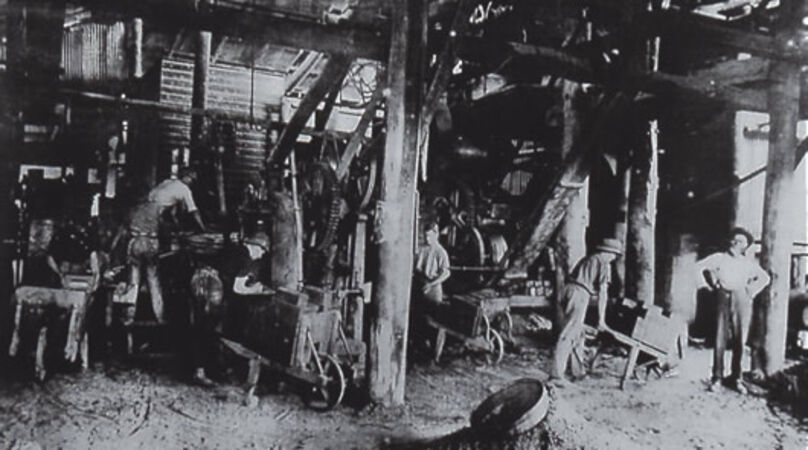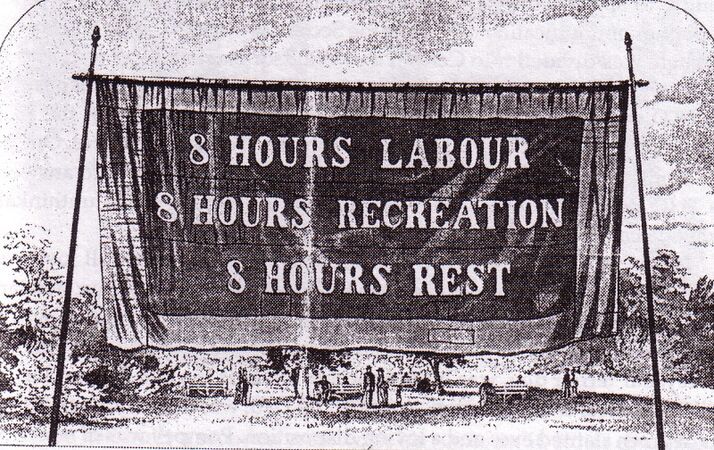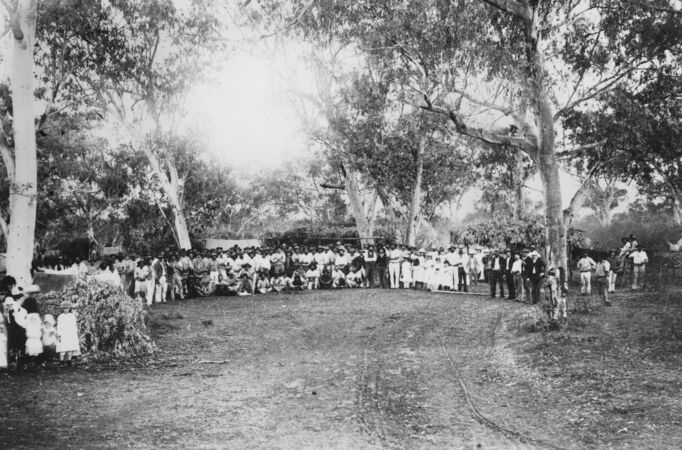The Royal Commission into shops, factories and workshops 1891 - with a focus on the evidence surrounding the boot trade.
By Dr Robin Trotter - 2024 Queensland Business Leaders Hall of Fame Fellow | 15 April 2025
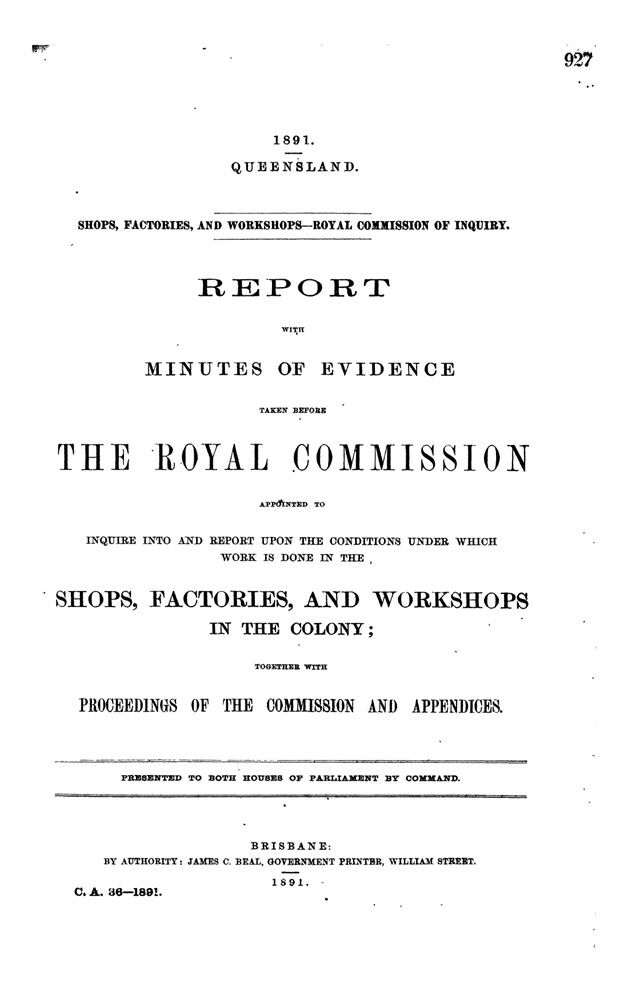
Introduction
Dr Robin Trotter, 2021 and 2024 Queensland Business Leaders Hall of Fame Fellow
My research into the history of the boot making firm of T C Dixon & Sons led me to explore the context of Brisbane’s early industrial history and that of the Brisbane boot trade (see my blog: The Bootmakers of Brisbane Part 1 and Part 2). That exploration led me, in turn, to look at the Royal Commission of 1891 to inquire into the Shops, Factories and Workplaces; an inquiry that was set up at a time when there was growing agitation from reformists and unions in respect to working conditions and wages, and when the boot trade was to the fore as one of the largest and most militant unions of the period. (1) Whilst this blog is a side issue to the Dixon story, it does set up the context for that story and for the history of the boot trade in colonial Queensland and into the twentieth century. And, although the recommendations of the Royal Commission were glossed over, the evidence collected over the period of the Inquiry provides detailed evidence for the historical record.
Booming Brisbane in 1880s and early 1890s
In his thesis on aspects of Brisbane in the 1880s, D. P. Crook wrote that Brisbane, by the end of the 1880s ‘had evolved forms of municipal organisation, and all the patent institutions of city life as they had emerged in the colonies - town halls and tramways, gas and Mechanics' Institutes, bridges and Exhibitions, theatres and cathedrals, libraries, tabernacles, Fire Brigades, electric light and water supply, hotels, classic city architecture and unclassical domestic architecture’. In effect, over that decade Brisbane had evolved from a frontier town to a metropolis [in the colonial sense].(2)
But this ‘Booming Brisbane’ had a dark side. As Lawson points out, the city’s development was ‘uneven’ and by the 1890s with the rapid growth of industrial development, there was evidence of ‘exploitation of workers in wages, hours and conditions’.(3) Exacerbating the exploitative and unsatisfactory conditions, the previous decade’s growth was slowing with the onset of depression and so pressure was evident on the shop and factory floors as businesses were facing tighter economic conditions. Increasing worker activism - demands for higher wages and better conditions were on the rise: It was, as some historians have noted, the rise of ‘new unionism’: a period when solidarity which had in an earlier period been the preserve of guilds and skilled workers had ‘spread in the 1880s amongst previously unorganised semi and unskilled workers’ – and not only in urban areas but in rural areas as well.(4)
Given these contradictions and the rise of worker agitation, the proliferation of reports, social protests and strikes, and increasing unease, eventually the hand of the 'Griffilwraith' (5) government was pushed into action, hence the decision in February, 1891, to establish a Royal Commission to inquire into Shops, Factories and Workshops.
The Commissioners appointed – twenty one of them – were a mixed mob but also interesting in terms of their occupations and political allegiances. [Later there would be criticism of the status of the Commissioners, the number of Commissioners and the cost of the Inquiry]. The majority of Commissioners were, of course, men of the colony, men of distinction across areas of society. The Worker (a weekly newspaper published in Brisbane and affiliated with the Australian Labor Party) was critical of the choice of Commissioners:
… If an attempt had been made to sort out a bunch more generally calculated to ignore the necessity for shops and factories' legislation it could hardly have been done [better] … what on earth could two or three sympathetic members do against shrewd, sharp and antagonistic shopkeepers and factory owners … We want an unvarnished exposure of the whole ungodly conditions under which men and women and children work in Queeland. (6)
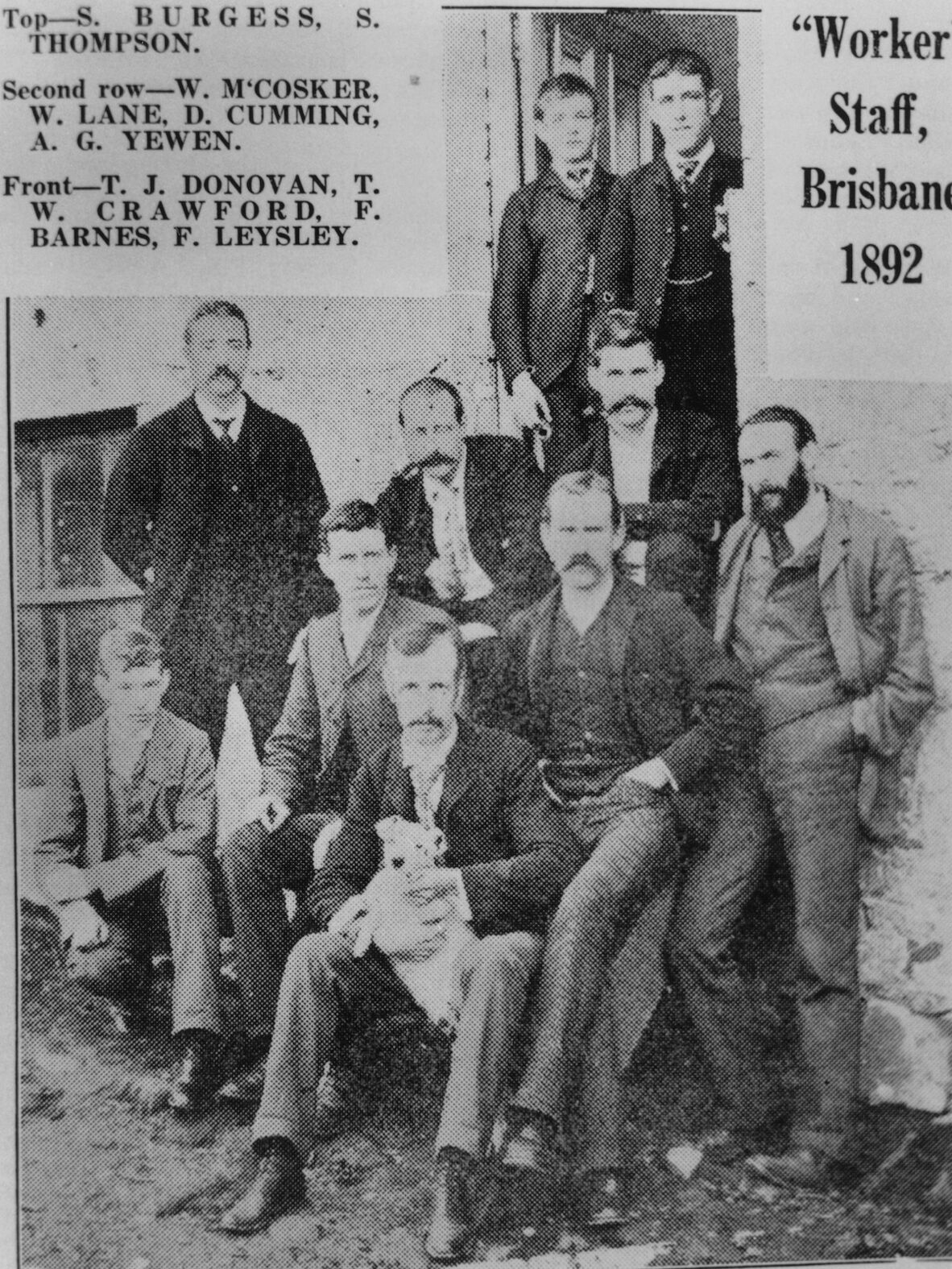
Worker staff, Brisbane, 1892. John Oxley Library, State Library of Queensland. Neg 111704.
The Boomerang (another weekly- but short lived - newspaper published by William Lane), showing its reputation as the socially conscious organ of the people, regularly bemoaned such conditions, claiming that:
… [workers] are becoming herded in stifling workshops and ill-ventilated attics; they are dragged back to work late in the summer nights; and they are forced to stand from morning till night behind the counters of the large emporiums that are the boast of the great towns. They are 'sweated' by clothing factories and boot factories. Little ones who should be at school or at play are working in factories and shops and the law, instead of rescuing them, stands by to ply the whip on their backs, if they revolt. (7)
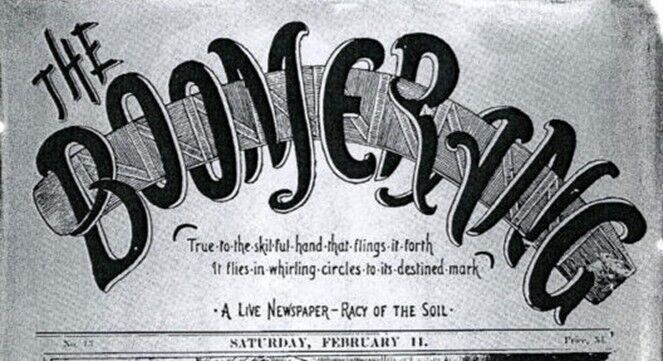
The Boomerang, 1887-1892.
Whilst these conditions applied to men, women AND children in general, the women’s movements apart from the battle for the vote, was also championing the cause of women in the work force, so selection of women to sit on the Royal Commission was not only a win for all women, it was also a win for working women. This was also a significant historical event as it was the first time women had been allowed to sit on a Royal Commission.(8) Moreover, the women were all committed to women’s welfare: health, working conditions, suffrage. Three of the six female Commissioners were involved with the unions as well as with the suffragette movement. So, despite the Worker’s bitter attack on the selection of men of ‘the Capitalist class’, there were other voices on the Commission.
Let’s take a look at these men and women who were finally appointed to sit on the Royal Commission. The appointees were selected by Government appointment, and selected from nominations from outside government. The Government appointees were: Hon. B B Moreton (Chairman), Messrs D H Dalrymple, T Glassey, J Chapmen, J. Ferguson, J J Kingsbury, W K Salton, T E White, and Dr Booth as well as Mrs Leontine Cooper and Mrs Grace Neill. The Federated Employers Union appointees were Messrs A Hunter, T Morrow, T W Thurlow, and Mrs Isles and Mrs E Edwards. The Australian Labour Federation appointees were: Messrs T W Crawford, F McDonald, J C Steward, and Mrs M O’Connel and Miss S A Bailey.(9)
Commissioners appointed by the Government
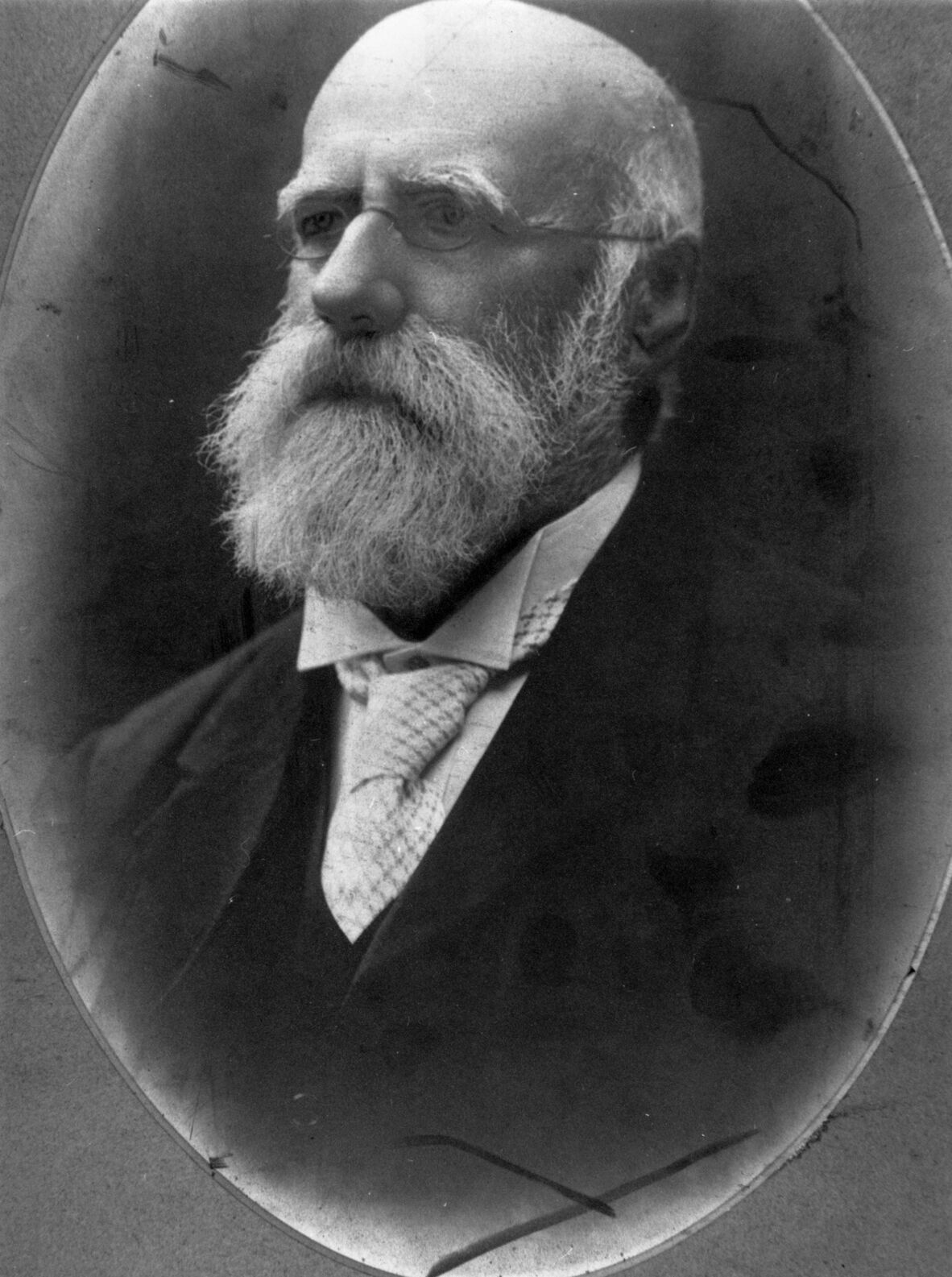
Honourable Berkeley Basil Moreton. John Oxley Library, State Library of Queensland, neg 68284.
Hon. Berkeley Basil Moreton (Chair)
Appointed Chair of the Royal Commission. A Pastoralist and Politician, Moreton had a chequered political career: 1870 elected to the Legislative Assembly for Burnett but resigned 1871; 1873 elected for Maryborough but resigned 1875; 1883 re-elected for Burnett but defeated 1888 at which time he accepted an appointment to the Legislative Council. True to form, Moreton resigned from the Council three years later to run for the Legislative Assembly but was defeated. He did not return to politics till 1899 when he was re-appointed to the Council by the Philp government. He remained in the Council till 1922. Whilst serving in the Griffith government Moreton held the positions of Postmaster General, Secretary for Public Instruction, Colonial Secretary. Moreton’s other public service roles included serving on the Rawbelle Divisional Board, acting as a trustee of the Queensland Museum, and as a director of the Queensland Deposit Bank as well as serving as a magistrate. (10)
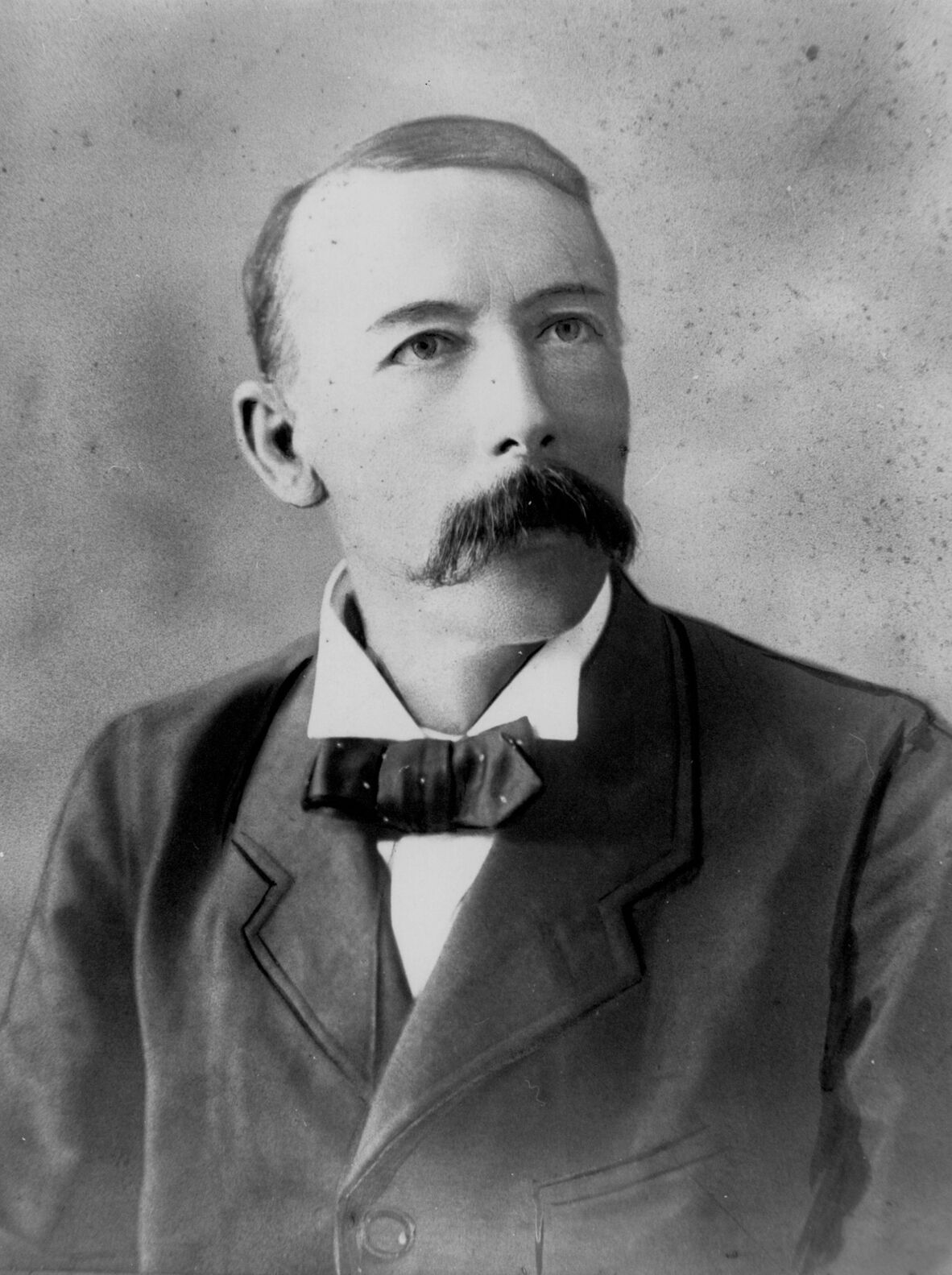
David Hay Dalrymple, 6 May 1896. John Oxley Library, State Library of Queensland. Neg 68202.
David Hay Dalrymple
Dalrymple was on the boards of the Mackay Hospital and the School of Art, the Road Board and later Divisional Board and also that town’s first mayor (serving several terms). He moved into colonial government as a member of the Legislative Assembly in the conservative governments of Sir Hugh Nelson, Sir James Dickson and Sir Robert Philp. Initially an advocate for northern separation, toward the end of the 1800s he took up the Federation cause. Whilst in government he held, successively, public instruction, public works, public lands, agriculture and public instruction. His achievements included improving the scholarship system, raising teacher wages, and achieving the Agricultural Bank Act to provide financial support to the rural sector. Prolific writer, and well known for his anti-socialism revealed in Letters on Socialism 1894. In addition, it is recorded he was an ardently opposed to women’s suffrage (11)
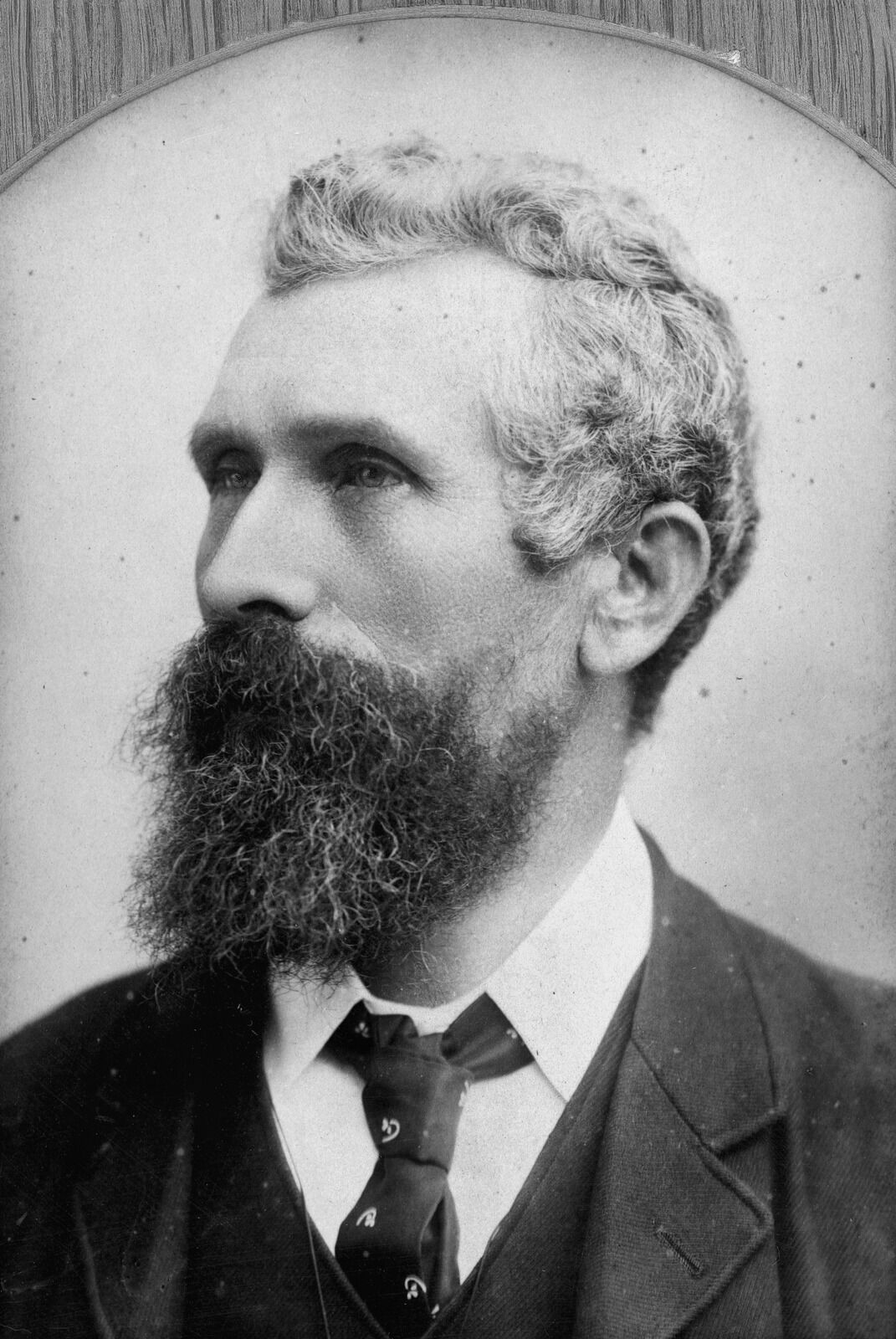
Thomas Glassey, 1899. John Oxley Library, State Library of Queensland. Neg 67807.
Thomas Glassey
Prior to immigrating to Queensland in 1884, Irish born Glassey had been a trade union activist in England and by 1874 was an election worker for Thomas Burt who was the first working man elected to the British Parliament. Within two years of his arrival in Queensland, Glassey had formed the Ipswich Coal Miners' Mutual Protective Association and taken office as the Association’s secretary. In another two years, 1888, he was elected to the Legislative Assembly on the endorsement of the Brisbane Trades and Labor Council for the seat of Bundamba 1888-93. He thus became the first ‘labour’ member of parliament in Queensland. Subsequently he won seats in the Assembly for Burke 1894-96, and Bundaberg 1896-1901. From 1901-1903 he was a Senator in the Federal Parliament.
Over his political career, Glassey was a reformer and advocate for Federation, Protectionism, Unionism and a prominent Labor leader, becoming known as the father of the Queensland Labor Party. (12)
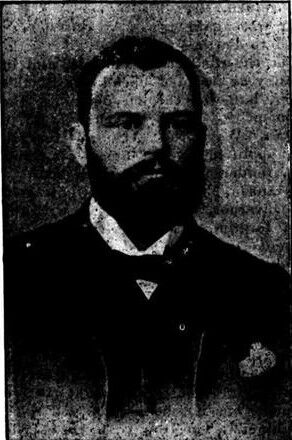
Dr James Booth. Illustrated Sydney News, 23 May, 1891. Trove National Library Australia.
Dr James Booth
Dr Booth was a Medical practitioner with a practice in South Brisbane. He was also Hon Secretary, Queensland Medical Ethical Association, Superintendent 1892-1893 for the Queensland Ambulance Transport Brigade and some years later – 1895 – was instrumental in bringing out to Australia our first woman consultant in Brisbane, and second in Australia: Dr Lillian Cooper. On her arrival in Brisbane, Dr Cooper worked with Dr Booth in his South Brisbane practice.
Later Dr Booth left Brisbane and settled in Broken Hill. He had an interest in literature, eugenics and civic affairs throughout his life. (13)
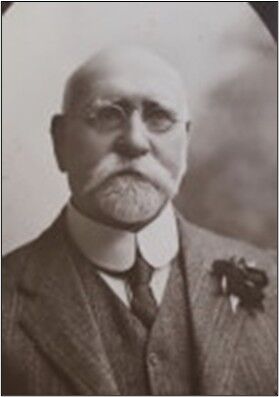
James Chapman, Ancestry.com.
James Chapman
Scottish born, Chapman partnered with Welsh born Richard Edwards to establish a drapery store in 1877– Edwards & Chapman - which operated out of leased premises on the corner of Queen and Edward Streets, Brisbane. So successful was the drapery a new building, designed by FDG Stanley, was built at 140 Queen Street. It opened 1881-1882. When Edwards retired in 1891, Chapmen continued as Chapman & Co. and diversified into furniture and fittings. (14)
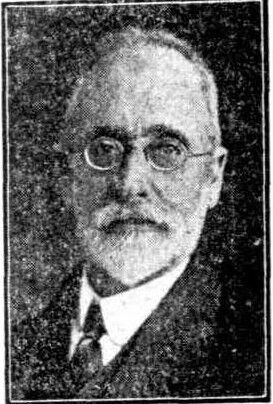
James Ferguson, Brisbane Courier, Monday 26 April, 1926, p.6. Trove National Library Australia.
James Ferguson
Born Scotland 1830, James Ferguson started his career in the book trade before migrating to Australia in 1863 and continued in the trade in the southern colonies before eventually coming to Brisbane in 1870 to manger the printing business then owned by John Watson. By 1872 he was a partner and shortly after appointed Chairman of Watson Ferguson. He was a founding member of the Master Printers’ Association. His activities outside business included charitable works, in particular starting up a boys’ home. Ferguson’s obituary notice records this home started in Ann Street, Brisbane, but ultimately moved to Enoggera.(15) Home Find and Connect, a web[based organisation devoted to recording the history of orphanages states:
The Boys’ Home was opened in April 1890 by Mr and Mrs Thompson in their own home in Stanley Street, South Brisbane. It was maintained by private subscriptions and donations of food, clothing and furniture. Mr James Ferguson (of Messrs Watson and Ferguson, booksellers) acted as honorary Secretary and Treasurer of the home. He also acted as trustee for most boys when they left the home to take up employment. The boys’ employers forwarded their wages to Ferguson who deposited the wages in their Savings Bank Accounts.
Within a few years new premises were sought to meet increasing demand and the Boys’ Home moved to a property named “Rowallan” at Kedron Park Road, Wooloowin. …The tenancy of the Wooloowin home terminated on 6 May 1906 and in June 1906, the home moved to the new nine acre property at Hurdcotte Street, Enoggera. The new Committee decided that the home should care only for boys aged 11 to 15 years. The name of the home was changed to Enoggera Boys’ Home in 1906. (16)
Ferguson resigned as Commissioner, 21 April. No reason stated.
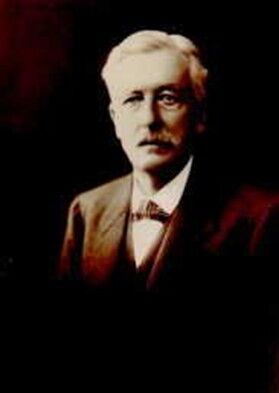
John James Kingsbury, Ancestry.com.
John James Kingsbury
Irish born, Kingsbury arrived in Melbourne in 1878. In the 1880s he moved to and settled in Queensland taking up a position as a manager for Beale & Co., a legal firm specialising in construction and insurance law. In 1886 he was appointed as a director of the Queensland Deposit Bank.
Subsequent to serving on the Royal Commission Kingsbury entered the political arena and in 1893 stood for parliament with Sir Thomas McIlwraith, winning the seat of North Brisbane. Whilst following a political career, he also took up the law and was appointed to Crown Prosecutor of the Supreme Court of Queensland – a position he held for the next twenty five years. (17)
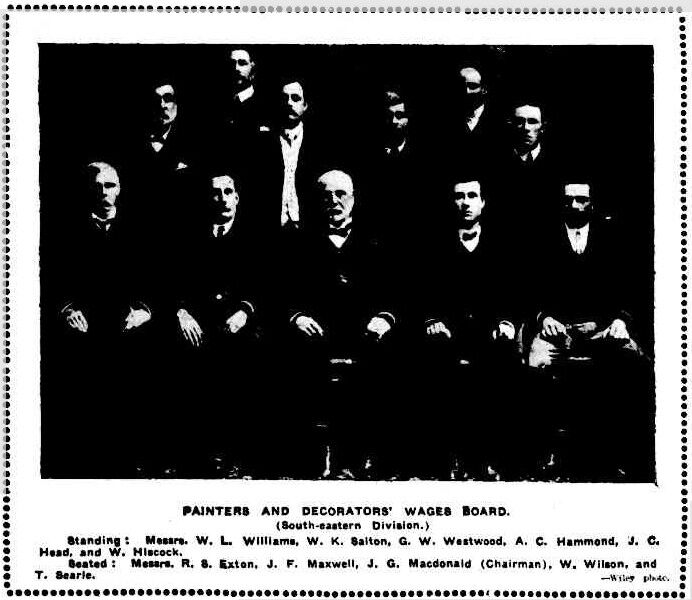
William King Salton at Painters and Decorators’ Wages Board meeting, Helidon, Brisbane Courier, 12 Feb, 1910, p.12. Trove National Library of Australia.
William King Salton
Glaswegian born, William King Salton (1850-1925, arrived in Brisbane 1874, at the age of 24 (or close to that). He worked for James Lang & Company, painters and decorators, located in Queen Street, Brisbane and married Lang’s daughter. After the death of James Lang, Salton carried on the business until its liquidation in 1899. In public life he was initially Secretary of the YMCA, a member of the Painters and Decorators’ Wages Board, and on retirement from business, he took on the role of Inspector of the State Children’s Department in Rockhampton and Townsville. Post this service role he subsequently returned to Brisbane and spent his last years residing in Sandgate (18).
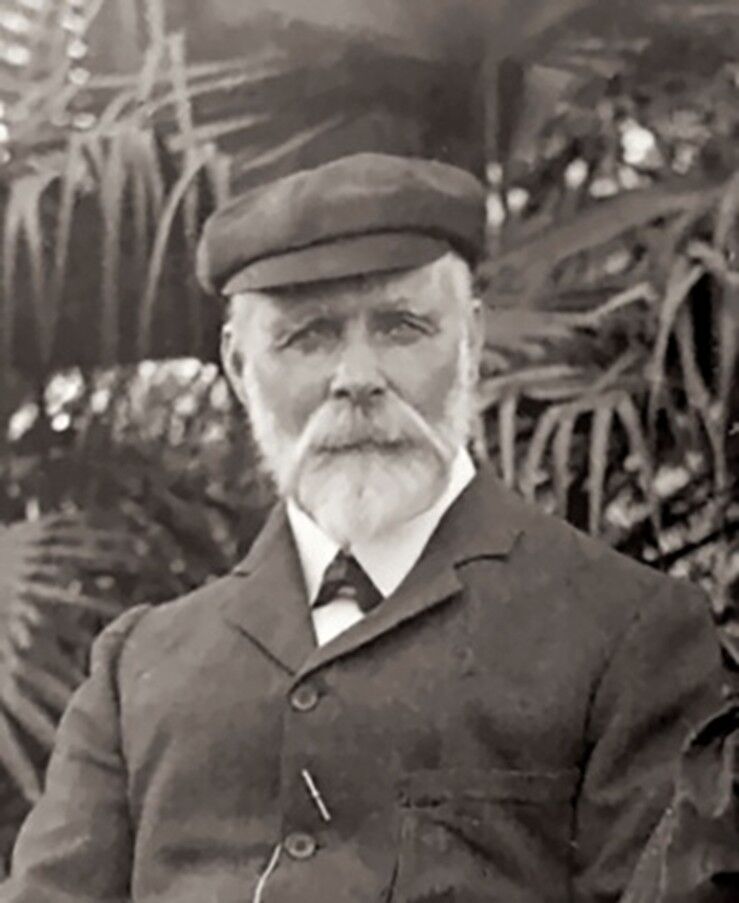
Thomas Edgar White, Lee Bull and Toowong Historical Society
Thomas Edgar White
Born .in England, White came to Australia as a child. His parents settled in Melbourne, where he was educated at Scots College, He became a member of the-firm of McLean .and White, hardware merchants; Melbourne for xx years-before coming to Brisbane. as managing partner in the firm of Alfred Shaw and Co, Ironmongers, in Queen Street. In this capacity he took over the Brisbane office of Ward Bros (agents for sewing machines). He was also appointed American Consulate Agent (1880-1891), involved with the Tramway Company, a member of the Brisbane City Council, and a member of the Chamber of Commerce. Post 1891, White set up the White Mercantile Agency (1896) (19)
![Chinamen’s Creek [AlbanyCreek] School, 1875, Presumably Leontine Cooper seven from the left.](/sites/default/files/styles/slq_standard/public/Picture1-1.png?itok=OycR4Jnv)
Chinamen’s Creek [AlbanyCreek] School, 1875, Presumably Leontine Cooper seven from the left. Image supplied by Dr. Deborah Jordan. https://harrygentle.griffith.edu.au/life-stories/leontine-cooper/
Leontine Cooper
Leontine Buisson, daughter of a French merchant and an English woman, married Edward Cooper, Surveyor, in 1869. The couple migrated to Australia in 1871 and settled in Brisbane. Her early career was as a teacher but she then took up journalism and was a frequent contributor to both William Lane’s The Boomerang and Louisa Lawson’s The Dawn. This brought Cooper into Brisbane’s literary circle and to serving on the committee of the Brisbane School of Arts and mixing with the social and political elite. As an advocate for women’s votes and women’s rights she also gained a growing reputation on these issues which would have brought her an appointment to the Royal Commission of 1891. Subsequently Cooper was a co-founder of the Women’s Equal Franchise Association (1894), and the Women’s Suffrage League. She also published a suffrage paper, The Star between 1894 and 1985. Cooper has been described as ‘the most important intellectual writing about white women's rights in the struggle for the enfranchisement of women in Queensland' (20).
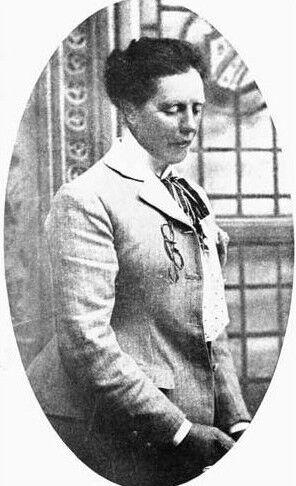
Grace Neill, Findagrave,com
Grace Neill
Elizabeth Grace was born and educated in England. Grace (as she was known) trained as a nurse and by 1876 had risen to lady superintendent at Pendlebury’s children’s hospital. In 1878 she married Dr Channing Neill and the couple’s early years were spent on the Isle of Wight until Channing’s health declined and he moved to Australia in 1885, settling in Brisbane. Grace, after undertaking training as a midwife, followed Channing a year later. Unfortunately, Channing died four years later and to support herself and their son, who would have been about eight when his father died, Grace turned to journalism writing mainly for the Boomerang and the Telegraph, but she also started up a typewriting business. In the 1890s Neill’s involvement with the formation of a union for working women was the catalyst for her appointment as a Commission for the Royal Commission of 1891 however following the Commission’s conclusion, Neill took up a position in New Zealand as that country’s first woman inspector of factories, and for the next fourteen years she continued in the New Zealand public service. Throughout her career Neill’s role took her into other areas, asylums, hospitals, license houses and charities with special focus on women’s health and welfare. And nursing reform (following Florence Nightingale’s ideas) became a focus of her attention – alongside that of women’s enfranchisement. (21)
Commissioners nominated by the Federated Employers Union
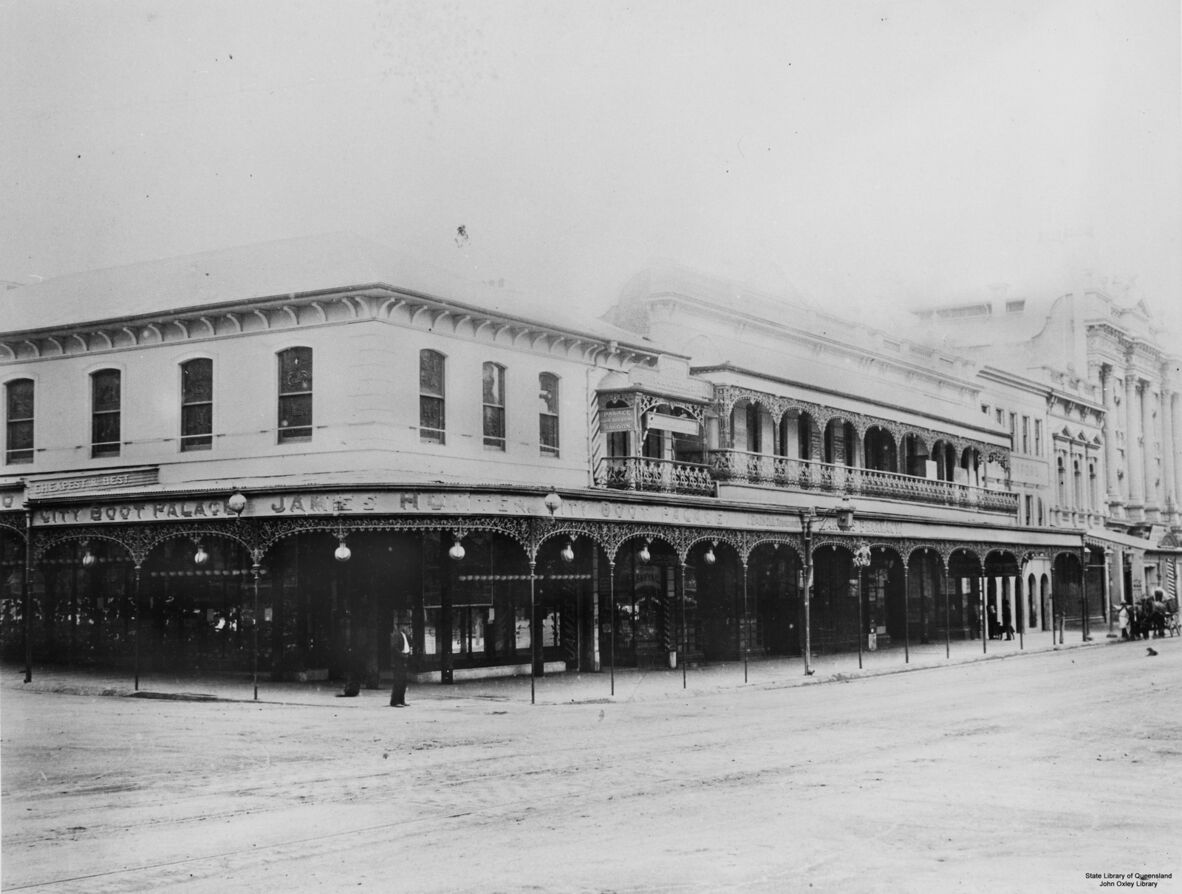
James Hunter's boot manufacturing shop, Queen Street, Brisbane, Queensland, 1889, John Oxley Library, State Library of Queensland, negative number: 100072.
Alexander Hunter
Alexander Hunter, businessman and bootmaker, with John Hunter’s Boot Factory. This was part of the John Hunter family ‘boot making and boot retailing empire’ established by John Hunter first in Sydney and then expanding to the other colonies. James Hunter, brother of John, set up boot making in Brisbane and extended to regional towns. These operations were subsequently acquired by John Hunter. (22)
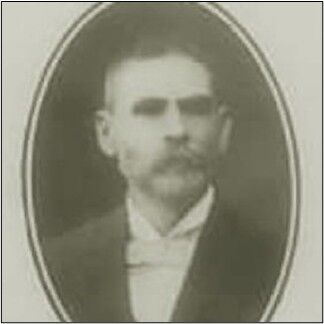
Thomas Morrow, Ancestry.com
Thomas Morrow
Irish born, 1841, Thomas Morrow arrived in Brisbane in 1863 and entered the service of Messrs Brabant and Co. merchants, and after about 20 years of service in that firm's employ, he joined Mr R.A. Rankin, in a biscuit and confectionery manufacturing business - Rankin & Morrow. After Rankin’s death (1908) the company name changed to Morrows Limited. Morrow was also the first chairman of the Taringa Divisional Board, and from 1897-8 he was a member of the City Council. He was known as a keen supporter of Sir Samuel Griffith's anti-Asiatic policy, and for a time was secretary of the anti-Chinese. (23)
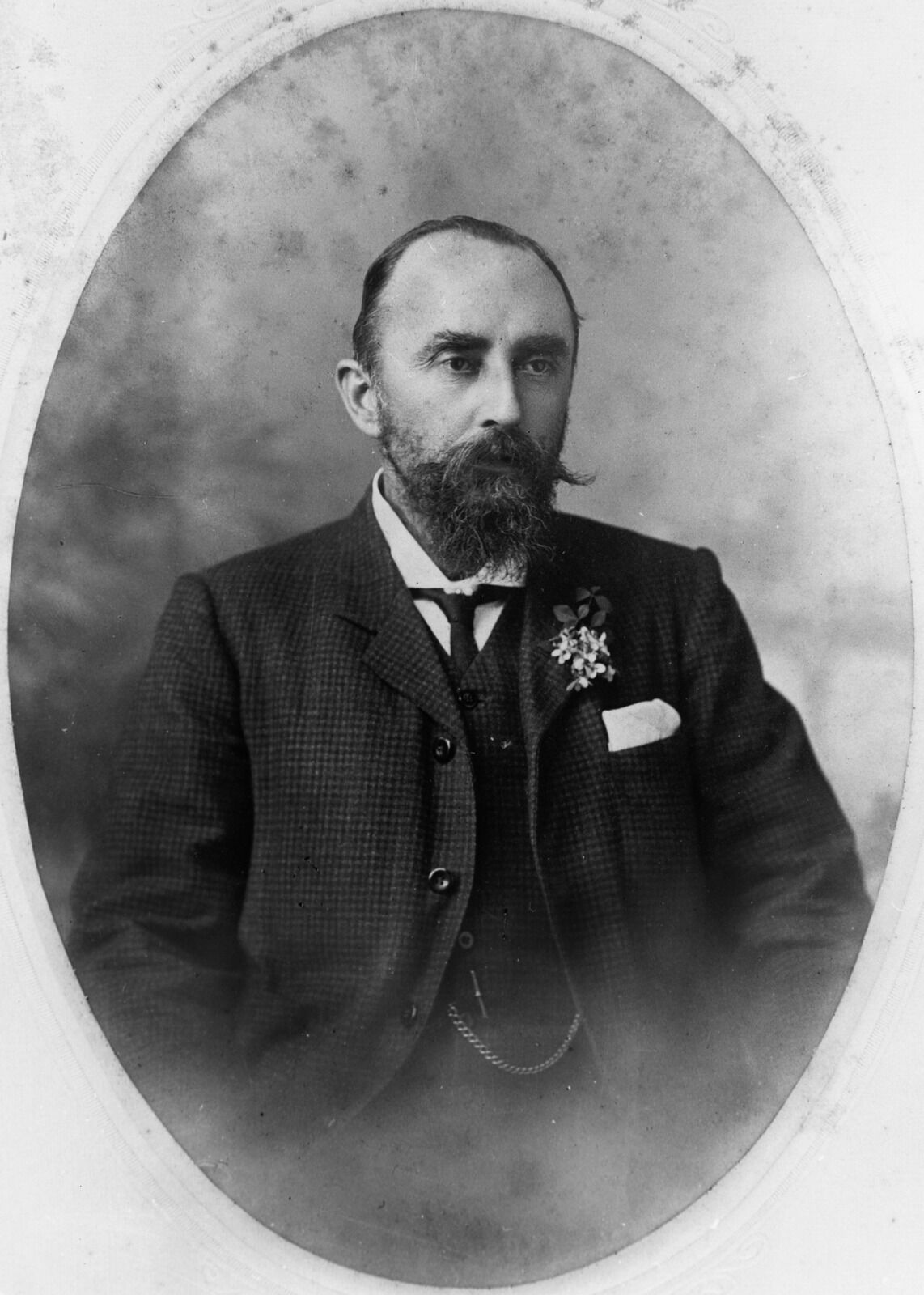
Robert Wood Thurlow. John Oxley Library, State Library of Queensland. Neg 22441.
Robert Wood Thurlow
R W Thurlow was a merchant, importer and Mayor of Brisbane. He was born in Suffolk, England and came to Queensland in 1867, when he was a boy. In 1870 he joined the firm of J. & J Burns and was manager by 1878. In 1884, following the death of John Burns, he bought the business which became R W Thurlow and Co. The business was expanded to include manufacturing alongside a general grocery, wine and spirit trade. The company had a spice mill in South Brisbane but moved and expanded at Charlotte Street in 1898. New spice mills, warehouse and counting house were erected and the whole complex was described at the time as ' one of the finest business premises in the Commonwealth'. By the turn of the century, the business was involved in the manufacture of coffee and spices, vinegar brewing and tea packing. This branch of trade was known as the 'Crescent Packing Co. (24)
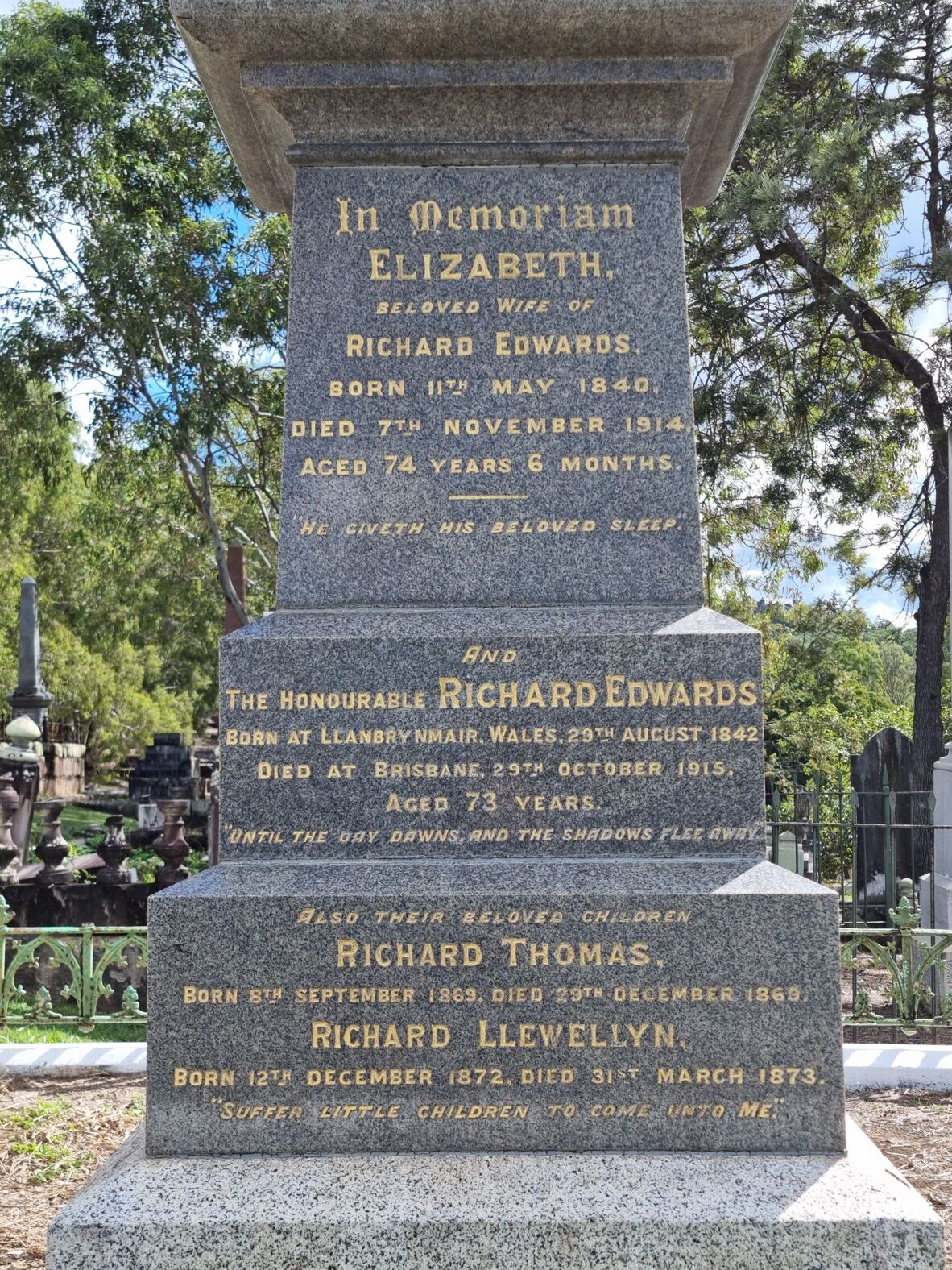
Elizabeth Edwards. Findagrave.com.
Elizabeth Edwards
Elizabeth Munro Edwards (née Gibson) was born in Scotland on 11 May 1840 and came to Australia with her parents, Thomas Gibson and Christina Thompson in 1864. Three years later she married Richard Edwards who subsequently became the member for Oxley division in Federal Parliament.
Elizabeth was the first president of The Queensland Women's Suffrage League which was formed at a meeting at her home on 4 February 1889. She was active in the Early Closing Movement. (25)
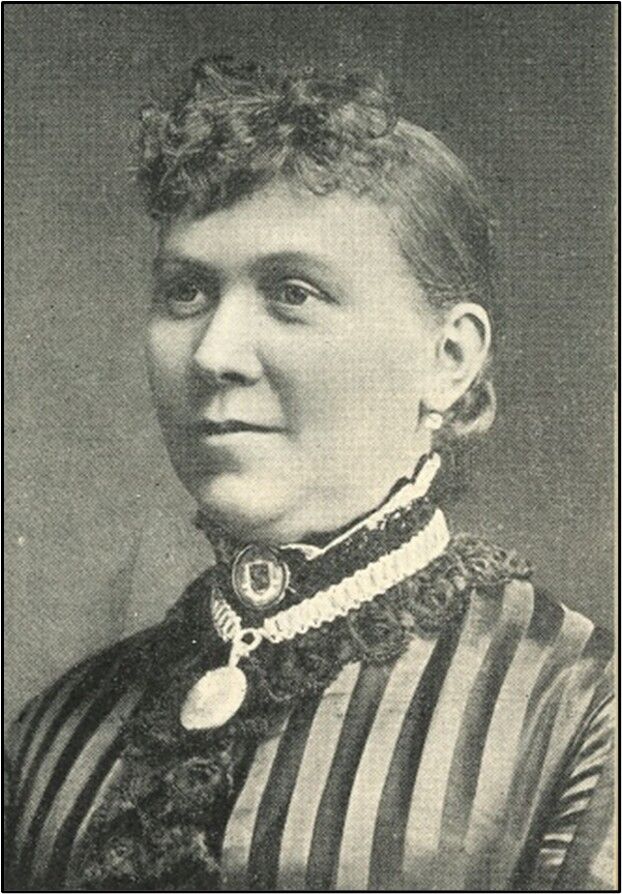
L.E., Slaughter, 1954, Finneys: 90 years of progress, Finney Isles & Co., Brisbane.
Isabella Jane Isles
Widow of James Isles who had been a partner of Thomas Finney in the business of Finney Isles (James Isles had died 1888). In a publication to celebrate 60 years of Finney Isles & Co., Isabella is described as a ‘forceful personality in the Finney Isles business in its early days'. (26)
Commissioners nominated by the Australian Labour Federation
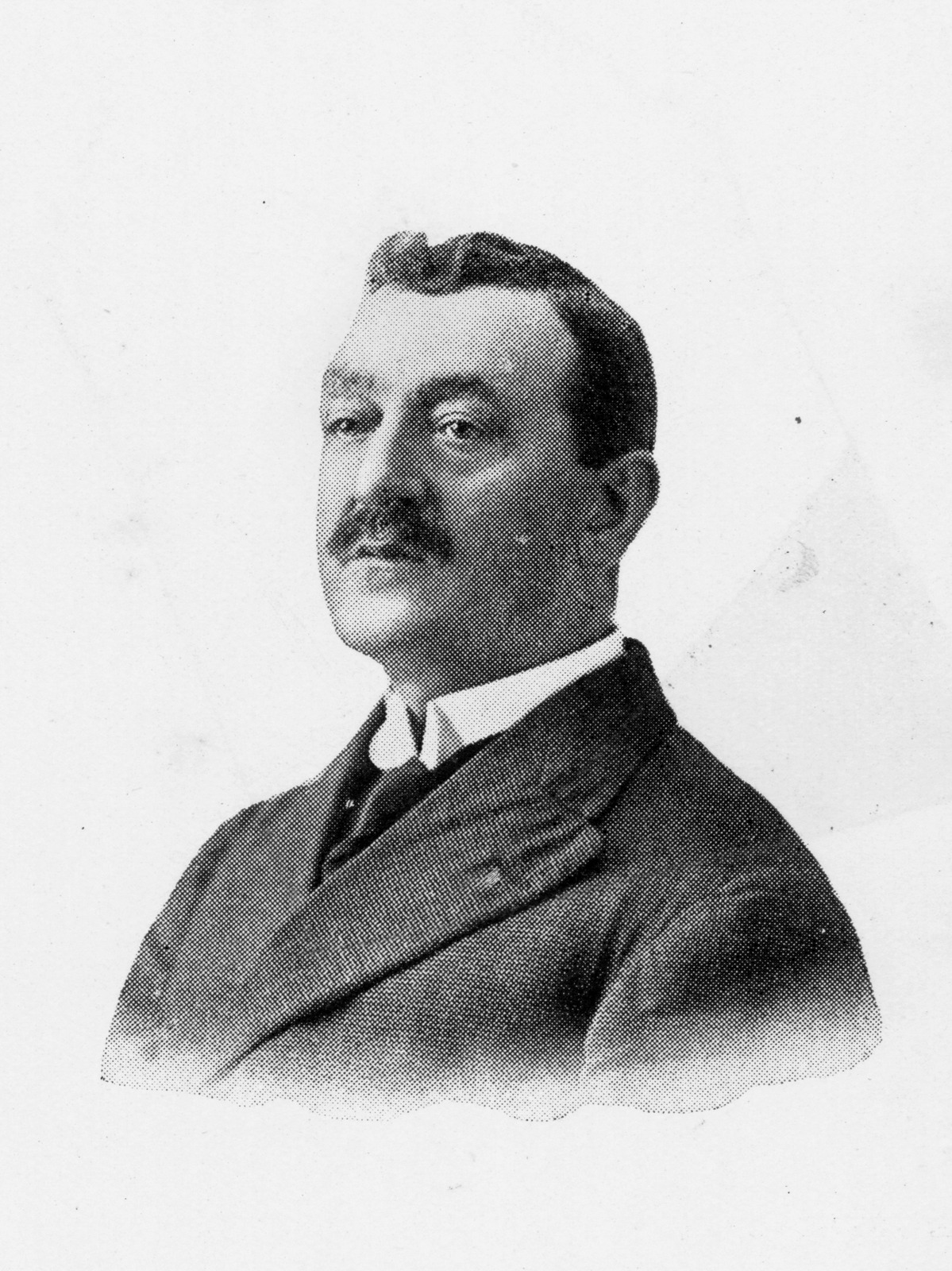
Frank McDonnell, John Oxley Library, State Library of Queensland. Neg 86881.
Frank McDonnell
Francis (Frank) McDonnell arrived in Brisbane 1886 after servicing his apprenticeship as a draper. Joining Finney, Isles & Co firstly and later moving to other drapery stores, he finally set up his own company, McConnell & East. Early factory experiences and working as a draper’s assistant drew McDonnell into an interest in industrial reform and into organising the Shop Assistants’ Early Closing Association. Acting as the Association’s secretary he also set up its publication, the Early Closing Advocate. It would have been reforming zeal that ensured his place at the table when Commissioners for the Royal Commission into Shop, Factories and Workshops were being selected. It also saw him entering politics shortly after 1891, and it was maintained throughout his political life, which he balanced with his business leadership with McDonnell & East. Later achievements included promoting a Wages Board, membership of the Queensland Labor Party executive, Treasurer, advocacy of improved working conditions for police and teachers, appointment to the Legislative Council (1907), promotion of the cotton industry in Queensland, an advocate for Home Rule, a trustee of the Brisbane Trades Hall, and member of the Senate of the University of Queensland as well as an ardent Anti-Federationist on the grounds it would lead to unemployment for Queensland workers. (27)
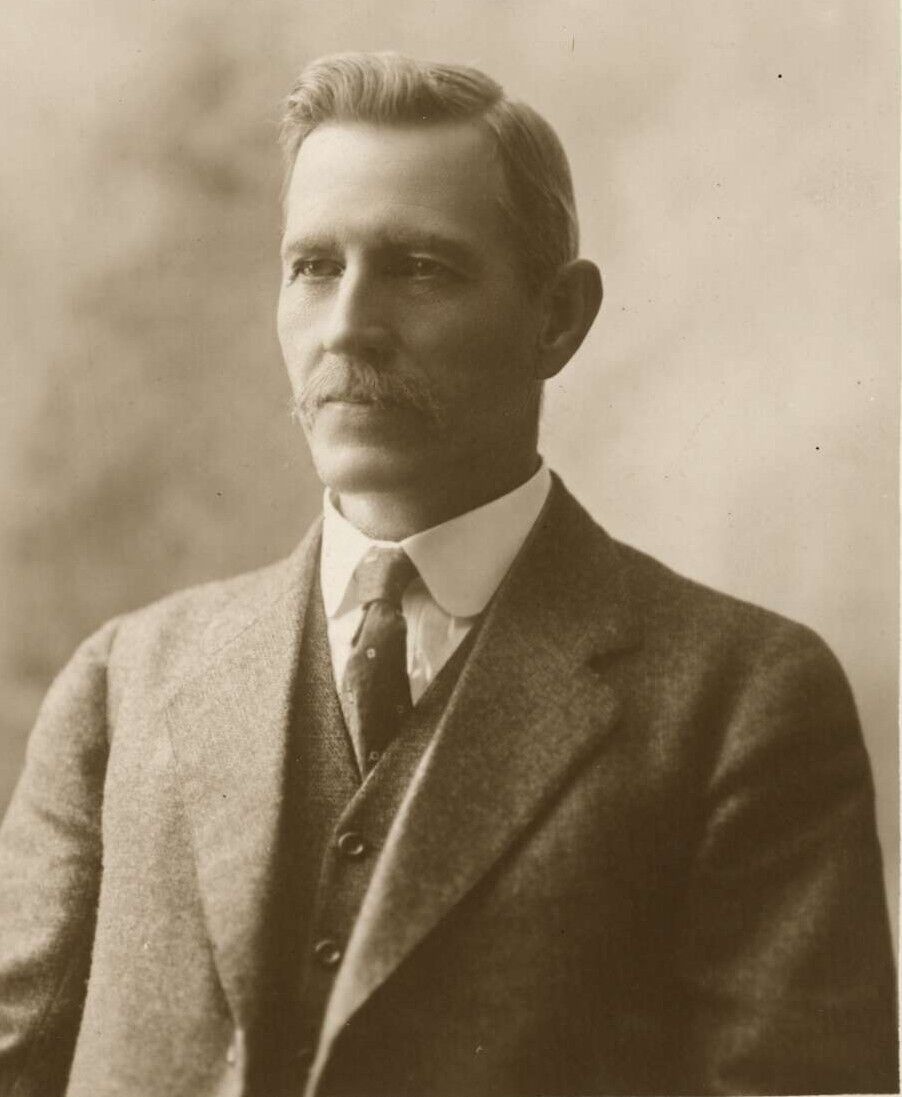
PIC Box PIC/7827 #PIC/7827-Portrait of Senator Crawford, Queensland. National Library of Australia.
Thomas William Crawford
Australian born Irish shopkeeper, Crawford’s early career was in the newspaper industry in Victoria before moving to Brisbane in 1888 to work for the Courier. With a Union background he quickly moved into a position as secretary of the Queensland Typographical Association and the next year moved into the President’s role. In 1889-92 Crawford was a delegate to the Brisbane District Council of the Australian Labour Federation. In the late 1890s he moved into sugar growing and from that time onward, was not only a grower but an advocate for the industry. Also this period of his life saw Crawford enter politics attempting first to stand as a Liberal candidate – unsuccessfully, but later, in 1917, winning a Senator’s seat for the Nationalists, a set which he subsequently held up until his retirement in 1947. (28)
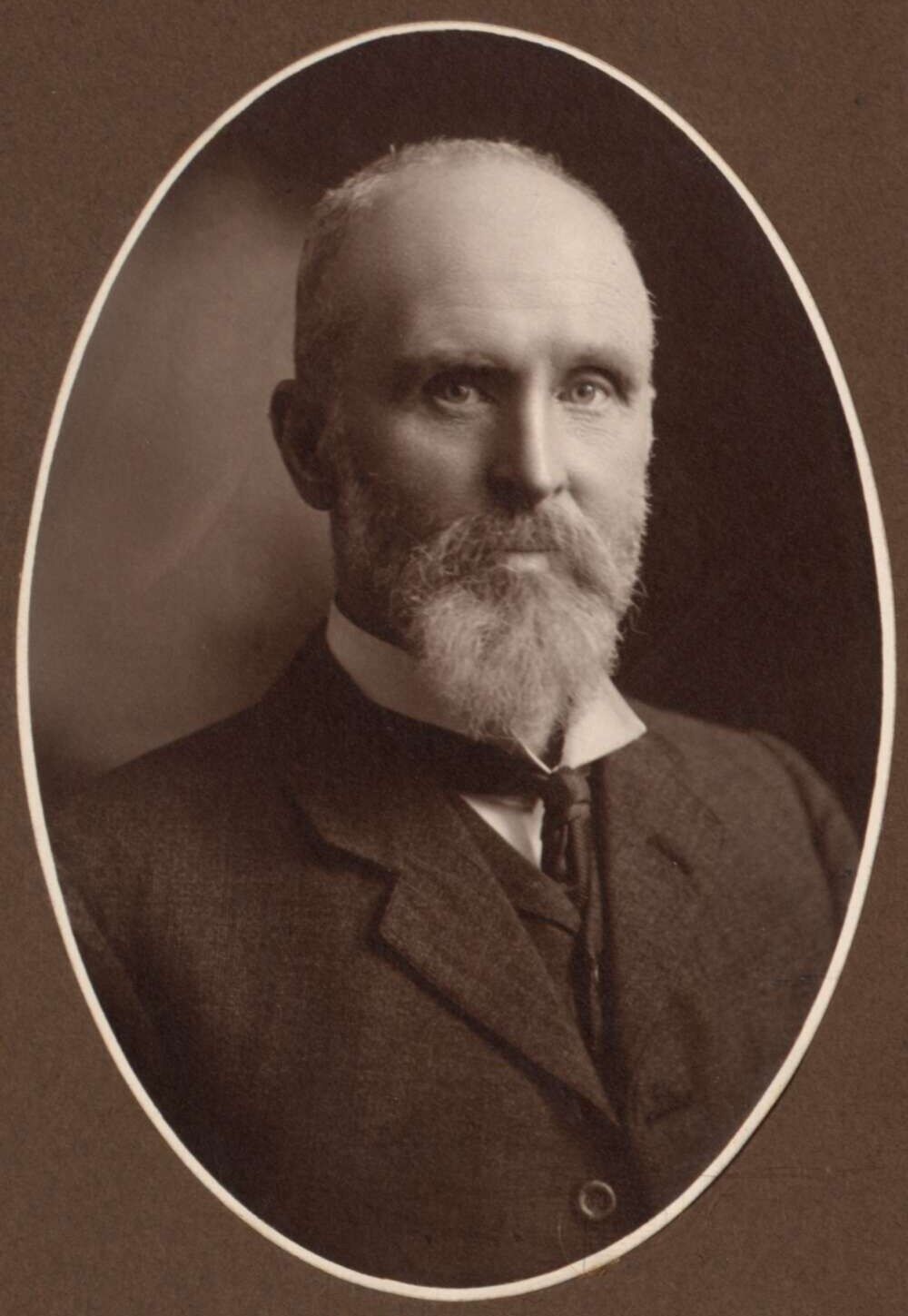
T. Humphrey & Co. 1908, Portrait of James Stewart. National Library of Australia.
James Charles Stewart
Scottish born, 1859, Stewart arrived in Australia in 1888. Joan Rydon’s biography of Stewart notes that although it is unknown whether Stewart was active in the union movement in the UK, he did correspond with James Keir Hardie so unsurprisingly on his arrival in Brisbane he quickly became involved with the labour movement here.
Following his work on the RC, he became editor of the People’s Newspaper (Rockhampton), he served on various unions in the area and was local Alderman 1892-96 when he won a seat in the Legislative Assembly. In 1901 he moved into the Senate. A strong Labor supporter, he was a member of the Federal Parliamentary Labor Party for periods between 1901 and 1917.
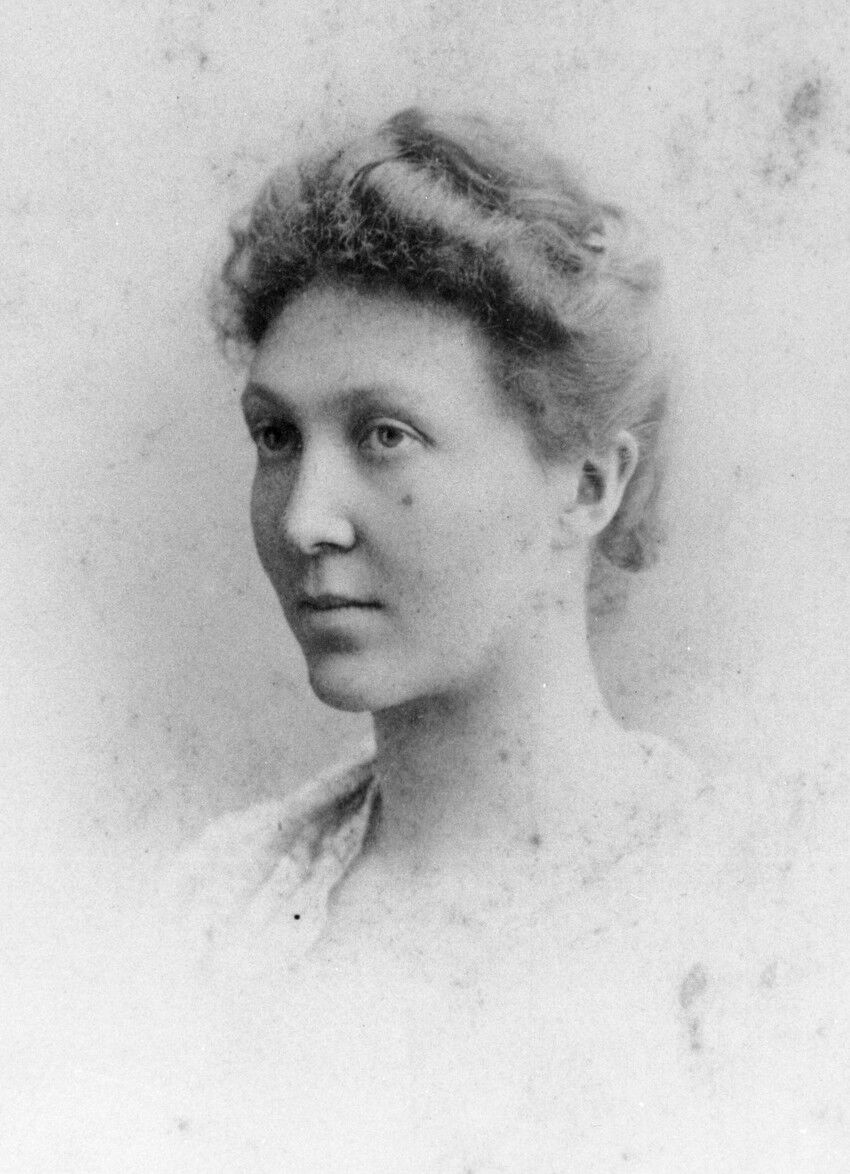
Mary Emma McConnel (1860 - 1929). John Oxley Library, State Library of Queensland. Neg 56320.
May McConnel
Formerly May Jordan, she married David McConnel in December 1890. Her father, Henry Jordan, had been a prominent politician who held a number of official positions so May would have grown up in a politicalised environment. Her training was in education and nursing but by 1890 she had become secretary of the Tailoresses’ Union and also involved with the formation of the Women’s Equal Franchise Association as well as secretary of the Australian Labour Federation (women’s section) and from 1890, was an organiser for the Federation. These credentials would make her an ideal Commissioner for the 1891 Royal Commission.
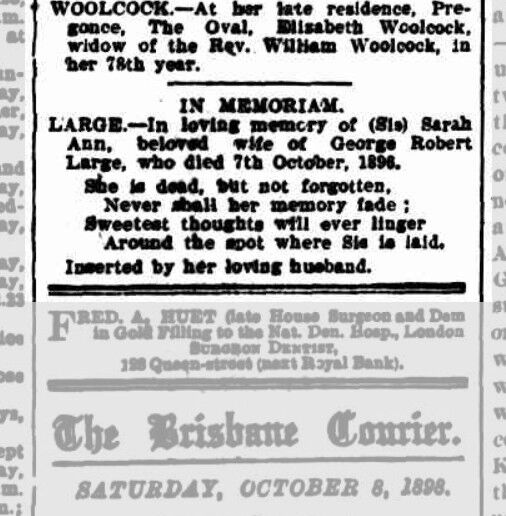
Sarah Ann Bailey "Family Notices" The Brisbane Courier (Qld. : 1864 - 1933) 8 October 1898: 6
Sarah Ann Bailey
Little information is available about this young woman other than that she was an active suffragette and also involved in trade unions, being an organiser for the Fitters and Machinists - a union associated with the boot trade. She died at an early age in 1896, in childbirth, about nine months after her marriage to George Large. Her baby son died two days later. Her grave in the Toowong Cemetery was one of a number of graves that have been destroyed so there is little in the historical record about Sarah Large (nee Bailey) other than a record of George Large’s memorial.
The Commissioners were tasked with inquiring into:
- The hours during which persons are employed;
- The conditions under which children are employed;
- The sanitary conditions; ,
- The manner in which protection is afforded against the dangers of machinery; and
- Other matters concerning the welfare of the persons employed in shops, factories, and workshops.
Over the course of the Inquiry, over 400 individuals gave evidence to the Commission, including a number of workers employed in the boot trade as well as the secretary of the Operative Boot Trade Union, William Strickland. One witness giving evidence to the Commissioner was Emma Miller. Miller identified herself as a ‘Gentleman’s white shirt maker’. Although Miller was not involved in the boot trade, she was a respondent of interest. She testified against sweating in the textile industries, and throughout her life was an advocate for women’s rights, a unionist (when women were not prevalent in unions), and a suffragette. (32) Today she is recognised as a pioneer advocate for women’s rights and is honoured with a statue in the Brisbane CBD.
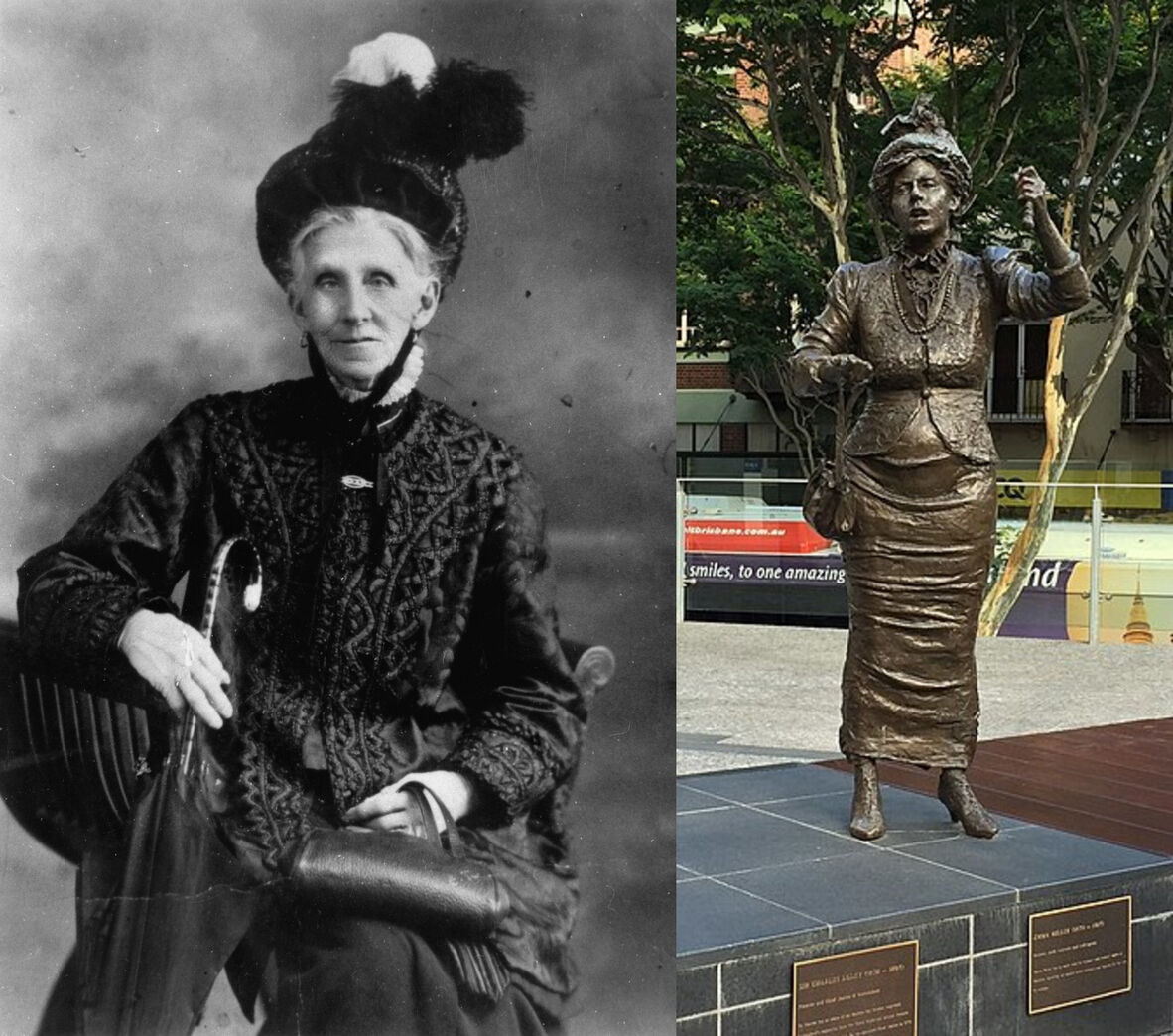
Emma Miller. Left - Portrait of Mrs. Emma Miller, John Oxley Library, State Library of Queensland Neg.
Right - Emma Miller statue in Brisbane, King George Square, Brisbane, Wikimedia Commons.
The Commissioners visited 49 work places in Brisbane and an additional 10 in Ipswich. Three boot factories were included in the visits to Brisbane establishments: John Hunter’s (Queen Street, Brisbane), Mr Neighbour’s Boot Factory (Brunswick Street, Fortitude Valley), and Goldsworthy and Perkins Boot Factory (Breakfast Creek). On instruction from the Commission, Robert Lee-Bryce, the City Inspector for the Municipality of Brisbane, visited a fourth boot factory, Rose’s Boot Factory (Russell Street, South Brisbane). Dixons Boot Factory (Montague Road, West End) was not visited but one of Dixon’s employees, Mr Walter Hubbard, gave evidence to the Inquiry at a night sitting of the Commission.
Commissioners' visit to Hunter's Boot Factory
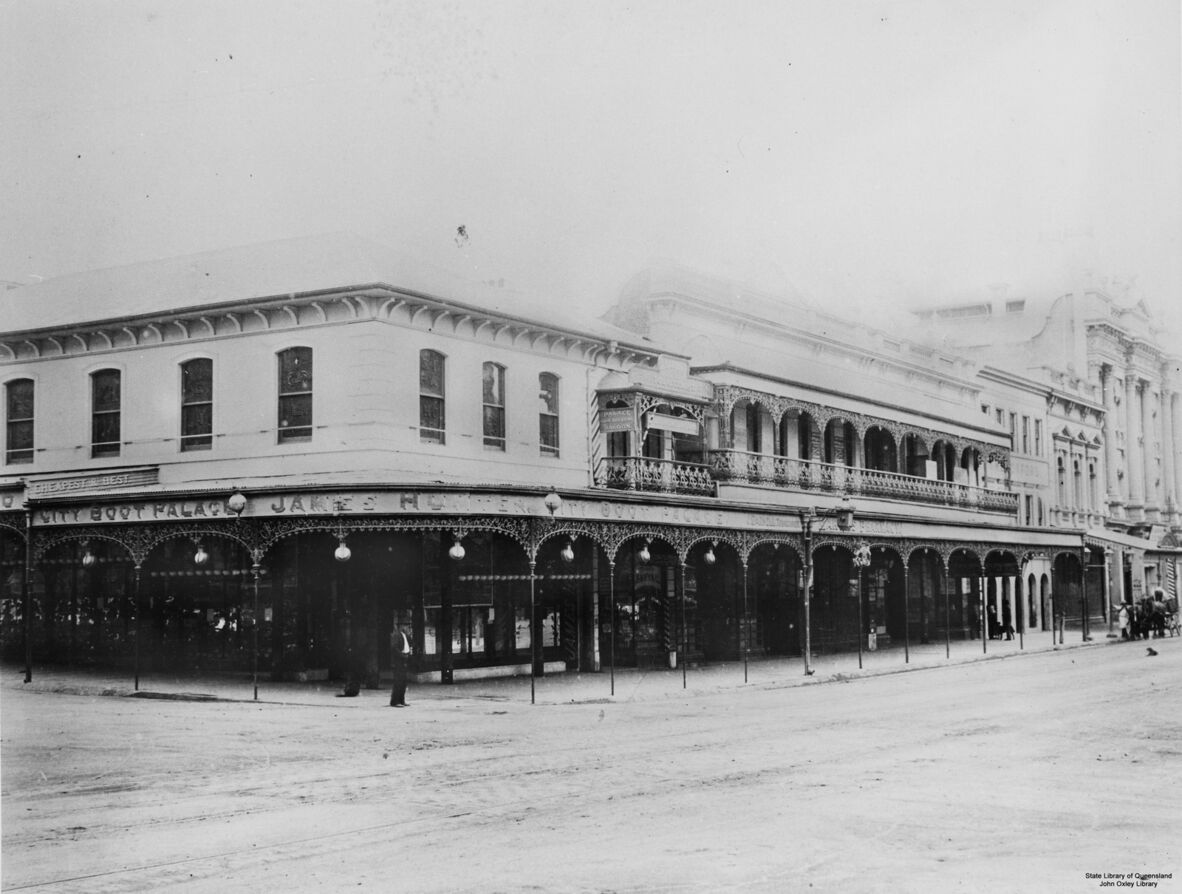
James Hunter's boot manufacturing shop, Queen Street, Brisbane, Queensland, 1889. John Oxley Library, State Library of Queensland. Neg 100072.
This was the report of Robert Lee-Bryce, the City Inspector for the Municipality of Brisbane, when he accompanied the Commissioners on their visit to Mr Hunter’s boot factory on 7th April, 1891:
Premises: Four flats; dimensions of each, 70 feet x 68 feet x 10. 12 closets. 205 persons on premises. 4 closets for girls, 8 closets for males.
In company with your Commission I to-day inspected the workshop in Ann street occupied by Mr. Hunter as a boot factory, and have the honour to report as follows:—There is absolutely no ventilation of any character to be of use to the workers, while the effluvia from the gas and the exhalations from the crowd of employees must, I think, have an injurious effect on their health. The workrooms are too low in the ceiling, and, in at least two of them, too many people are employed, while the division of the sexes does not appear to me to be judicious. The sanitary arrangements are capable of very considerable improvement, and with the exception of a very small space (which is really of no use) in one of the workrooms screened off for the girls, there is no place set apart for meals, &e. I did not see any apparatus for extinguishing fire, while the wooden steps outside for a fire escape would be of no use whatever, as only one person at a time can have egress on them. The inside stairs are also of wood, and in the event of a fire taking place, it would certainly result disastrously. The premises inside require to be immediately cleansed, and arrangements made for this to be constantly attended to. The cubical space allotted to the hands is of a minimum character. The urinals were smelling offensively.
City Inspector's Visit to Rose's Foot Factory
Robert Lee-Bryce’s report on Rose’s Boot Factory, which he visited on 8th April, was much more concise, but equally critical of the working conditions:
In accordance with your arrangement I did not inspect the cellar floor of the boot factory in Russell street, South Brisbane, occupied by Mr. Rose; but at the request of several members of your Commission I visited the remaining parts of the premises, and have the honour to report as follows:— There is no ventilation whatever; the premises as visited in my presence are very much overcrowded, and the place is not structurally adapted for occupation as a factory. The sanitary arrangements are defective.
Commissioner's visit to Mr Neighbour's Boot Factory
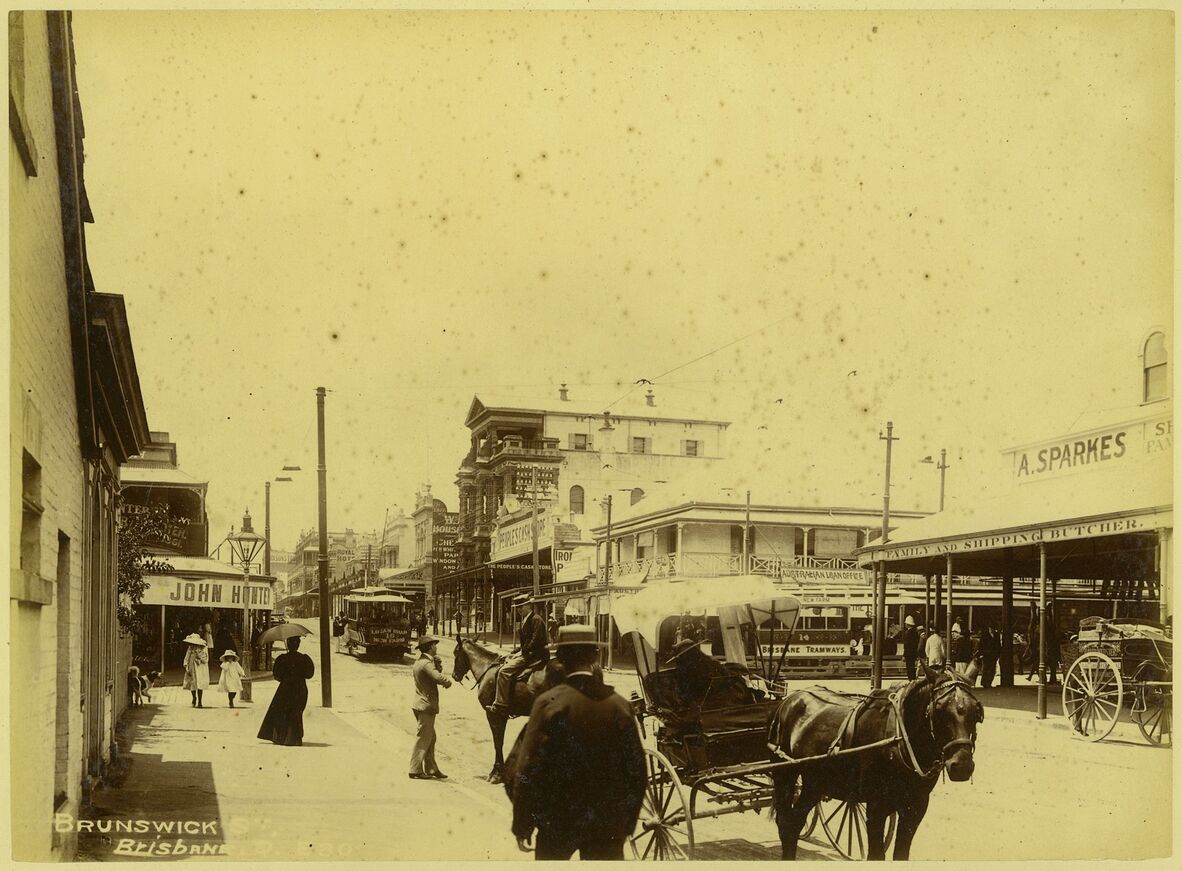
Brunswick Street, Fortitude Valley, Brisbane, ca. 1899. APU-48 Views of Brisbane Inner-City and Queensland Localities, John Oxley Library, State Library of Queensland.
The following day, the Commissioners, with Mr Robert Lee-Bryce, visited Mr Neighbour’s Boot Factory in Brunswick Street, Fortitude Valley, and the Inspector undertook close scrutiny of the premises and again reported that this factory’s conditions for its workers were unsatisfactory in a number of areas:
On the street floor there is a workroom 93 feet x 31feet 5 inches x 24 feet for the accommodation of fifty male and thirty-two female workers, and having sixteen windows on the sides of the building, along with one on the roof. There are twenty-four gas jets and twenty-five machines in the room. The ventilation is fairly good.
Below the level of Brunswick Street there are two workrooms.
One of these measures 41 feet 6 inches x 32 feet x 11 feet 8 inches, and is for seventy-five male workers, which allows a very minimum cubical space for each. Fourteen windows light the room. Ventilation is very imperfect.
The other workroom measures 54 feet 8 inches x 32 feet x 11 feet 8 inches, and is tor twenty five male workers. Eleven windows give light. There are six gas jets and two large burners for heating irons. The ventilation is imperfect. The sanitary arrangements are very defective, and the closets are not constructed with any regard to privacy. There is one closet with two seats for the females; and two closets, each with two seats, for the males. Persons using the closets must therefore dress and undress in the presence of each other. The drainage is fairly good.
The several floors are only swept twice a week, and only washed with a hose about once a month.
There is no apparatus to extinguish fire. There is one cloak-room for the girls.
Commissioner's visit to Goldworthy and Perkin's Boot Factory

Messrs Goldsworthy and Perkins’ s Boot Factory, Newstead, Booroobadin, Brisbane. The Boot and Footwear Factory, Research by David Loosemore 2004.
The Commission moved on to Goldsworthy and Perkins Boot Factory on 10th April, and the Inspector’s report read ss follows:
The building contains two workrooms, each of which measures 70 feet x 35 feet x 11 feet.
The workroom on the ground floor is to accommodate twenty males and twenty females, white that on the upper floor is to accommodate thirty-five male operatives. . Both of the workrooms are well lighted by means of glass windows.
A very small shed, which is not water-proof, is set apart as a cloak-room for the girls.
The sanitary arrangements are grossly insufficient, there being only one closet for males and one for females. The surroundings of the closets are disgustingly filthy, the ground being covered with urinations and evacuations. No earth or deodorant is supplied for closet use, and the stench is very offensive. Trade and other refuse is scattered in heaps over the yard and ground.
The premises are hot drained, and pools of water stagnate in front of the factory facing towards the street. The end of the down pipe to carry off storm water from the roof guttering is about 2 feet above the surface of the ground and only 2 or 3 yards from the girls’ closet, while no provision whatever is made to carry off the storm water as it will pour down.
The premises are very dirty. There are no appliances to extinguish fire.
T C Dixon's Foot Factory evidence
Although the Commissioners did not visit Dixon’s Boot Factory in West End, one of the company’s employees, Mr Walter Hubbard, gave evidence in a sitting of the Commission.
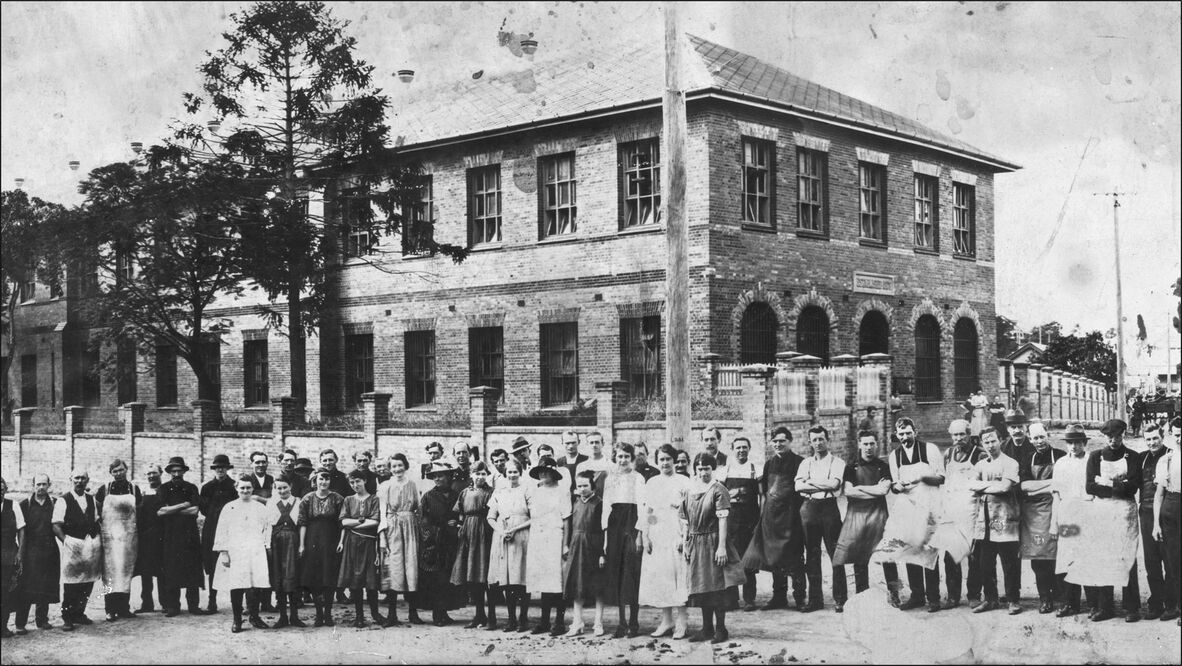
Dixon's Shoe Factory, Montague Road, West End. 29851, Dixon's Shoe Factory, Montague Road, West End, John Oxley Library, State Library of Queensland.
Mr Hubbard identified himself as a bootmaker. Although he was employed at Dixons at that time, he had also worked in other boot factories in Brisbane: Hunter’s Boot Factory, Goldsworthy and Perkins, Palmer’s and Harris, as well as Neighbours. In respect to Dixons, Mr Hubbard’s comments were generally positive or non-committal. However, the Commissioners appeared more interested in Mr Hubbard’s experiences at the other boot factories rather than his comments on working conditions at Dixons:
The Chairman: Is the ventilation of the factory [Dixons] good? I cannot complain of the ventilation.
Are the rooms not hot? They are very hot in the summer time.
But you have fair ventilation ? Yes ; fair. …
What do you complain of? I have not very much to complain of at Dixon’s, but I 'have had experience of other places. …
What are the sanitary arrangements at Dixon’s? They are good. …
Have you got anything to complain of at Dixon’s ? Nothing, with the exception of the system of paying. We are paid fortnightly.
Are the men favourable to that ? No, they are all in favour of weekly payments.
In the main, Mr Hubbard’s comments on the other factories where he had worked tended to be less complementary:
Mr. McDonnell: What is the ventilation like in Palmer and Harris’s? Very good; it is the best shop I have worked in. …
How many men were engaged at Goldsworthy and Perkins’s? About fifty men, and from fifteen to twenty women and girls.
What was the ventilation like? The ventilation I consider was very bad there.
Was the workroom on the ground floor? One on the ground floor and one upstairs. The upstairs room was better ventilated than the downstairs room.
Was it oppressive to work downstairs ? Very oppressive. …
How long were you working at Hunter’s ? About four months. ….
Were the sanitary arrangements good there? No; very bad.
The ventilation? It was badly ventilated—bad windows for ventilation.
What difficulty did you experience with the windows? We had to have them wide open to get any fresh air, and then there was too much. If they were partly opened they interfered with the work, …
How many closets are there? One for the men.
Were they regularly looked after? No; it was the exception to see them looked after.
Was earth supplied? They never had any earth there at all.
Were there any urinals? No, none.
Dr. Booth : Do Goldsworthy and Perkins employ girls ? Yes.
Are the sexes separated? They are in one room.
Do you know anything about the sanitary accommodation for the females ? No, I do not; but they have no dressing accommodation; they dress and undress behind the door.
Outcome of the Royal Commission
The Commission presented two Reports the first dated 11 June and the second report dated 13 June, 1891. James Booth added a ‘Rider’ to the two Reports.

The Royal Commission to enquire into and report upon the condition under which work is done in the Shops, Factories, and Workshops in the Colony, Lune, 1891,
The First report of 1 June was signed by:
- B. B. MORETON, Chairman
- THOMAS GLASSEY
- JAMES BOOTH
- THOS. W. CRAWFORD
- FRANK McDONNELL
- .J. C. STEWART
- LEONTINE COOPEB
- ELIZABETH EDWARDS
- MAY McCONNEL
- ISABELLA J. ISLES
- GRACE NEILL
- S. A. BAILEY
and made the following recommendations:
|
RECOMMENDATIONS
|
Whilst not listed in the above, the First report did make a recommendation in respect to the controversial issue of early closing, stating: ‘Your Commissioners therefore recommend that 6 p.m. to made by legal enactment, the hour at which shops should close’ That the question of early closing was divisive is evident in that some of the Commissioners did not support this recommendation, hence the second, and minority, report which stated in relation to early closing: ‘We cannot recommend that this legislation be granted'. Signatories to the Second Report were:
- JAS. CHAPMAN
- ALEX. J. HUNTER
- J. J. KINGSBURY
- THOS. MORROW
- WM. K. SALTON
- D. H. DALRYMPLE
- THOS. E. WHITE
- R. W. THURLOW
James Booth added a Rider to the Report in which he stressed medical and wellbeing concerns and also gave his support to early closing on those grounds.
How effective was the Royal Commission
There was no immediate implementation of the recommendations and within two years the political situation had changed. Sir Samuel Griffith – of liberal and federalist views - resigned as Premier to take up the position of Chief Justice of Queensland and Sir Thomas McIlwraith returned to head up a Conservative government. A Shops and Factories Act was not achieved until 1900 and with that came regulation of trading hours for shops and the Act also made some moves toward reforming workers conditions.
In relation to the Royal Commission’s brief to examine the extend of child labour, the Queensland’s State Education Act 1875 had made education compulsory for children 6 to 12 but the compulsory clauses of that Act were not gazetted until 1900 at which time the school leaving age was also raised to 14.
Despite the tardiness of the Griffith and subsequent governments to follow up on the Royal Commission, the work of the Commissioners should be both recognised and recommended. And despite political and social differences of the Commissioners, their integrity and commitment to the task is clear in the record of evidence. That evidence provided by witnesses, even given that there may have been reluctance on the part of witnesses to either appear before the Commission, or to provide certain information, does give insight into working conditions in shops, factories and workshops in Brisbane/Ipswich in the late 1800s.
And, in conclusion, we may ask what impact the Royal Commission had on the boot trade. No immediate impact given the inaction of the Government to follow up on the Report. And the bootmakers were increasingly flexing their combined muscles to confront their employers until they called a strike in 1905; the first bootmakers’ strike had occurred in 1885 with some wins for the workers. Unfortunately, for the workers, the 1905 strike ended badly for the striking bootmakers and many lost their jobs as a result. However, the information garnered during the course of the hearings and the visits to the boot making factories has provided insight into an industry that was important to the colony/state in terms of products, gainful employment, and trade upskilling. And the social and economic value of the boot making trade is clearly evidenced throughout the probing questions and the witnesses’ responses.
Other blogs by Dr Robin Trotter, 2021 and 2024 Queensland Business Leaders Hall of Fame Fellow
- Bootmakers of Brisbane [Part 1]
- Bootmakers of Brisbane [Part 2]
- The Pioneering Hide, Skin and Leather Industries of Brisbane: The Dixon Tanneries [Part 1]
- The Pioneering Hide, Skin and Leather Industries of Brisbane: The Dixon Tanneries [Part 2]
- Frank McDonnell And The Early Closing Movement
- How to make a Carton: history of paper making in Australia
- The making of a Knight: Sir Arthur Petfield
- A Career in Cards
- How Napoleon's pistols came to Queensland
- Sir Arthur Petfield and 'The World Shrinkers'
Referencees
- The Queensland Amalgamated Operative Boot Trade Union (QAOBU) was formed 1887 and by 1895 had 356 members. See Sullivan, R. J. & Sullivan, R.A, 1983, ‘The London Dock Strike, the Jondaryan Strike and the Brisbane Bootmakers' Strike’. in Murphy, D. J. (ed.), The Big Strikes: Queensland 1889-1965, Queensland University Press, St. Lucia, p.60.
- Crook, D.P., 1958, ‘Aspects of Brisbane Society in the Eighteen Eighties; BA Thesis, School of History, University of Queensland, St. Lucia. p.1, https://doi.org/10.14264/241733; and Lawson, R., 1973, Brisbane in the 1890s, University of Queensland Press, St. Lucia, p.7.
- Lawson, Ibid., p.37.
- Markey, R., 1985, ‘New Unionism in Australia, 1880-1900, Labour History, May, No. 48, pp.15-28, https://www.jstor.org/stable/2750871
- Stephens, A.G., 1893, The Griffilwraith : being an independent criticism of the methods and manoeuvres of the Queensland Coalition Government, 1890-93, A. J. Ross & Co., Brisbane,
- ‘The Editorial Mill’, 1891, Worker, Saturday 10 January, 1891, p.1.
- The Boomerang, 8 Jan 1888, cited in Whitfield, G., 1969, ‘Industrial Conditions in Early Brisbane: Reports of the 1890s’, Queensland Heritage, Vol 1, No, 1, pp.20-3.
- Paten J., 2005, ‘Coppertails and Silvertails: Queensland Women and Their Struggle for the Political Franchise, 1889–1905’, Queensland Review, Vol. 12, No.2, pp.23-50; Young, P., 1991, Proud to be a Rebel: The life and times of Emma Miller, University of Queensland Press, St Lucia, Queensland.
- ‘Queensland: Brisbane’, Sydney Mail and New South Wales Advertiser, 21 February 1891, p.421.
- Gibbney, H.J., 1974, 'Moreton, Berkeley Basil (1834–1924)', Australian Dictionary of Biography, National Centre of Biography, Australian National University, https://adb.anu.edu.au/biography/moreton-berkeley-basil-4242/text6849, published first in hardcopy 1974.
- Gill, R.W., 1981, 'Dalrymple, David Hay (1840–1912)', Australian Dictionary of Biography, National Centre of Biography, Australian National University, https://adb.anu.edu.au/biography/dalrymple-david-hay-5871/text9987, published first in hardcopy 1981.
- [Bowden, Bradley, 1997, “‘Some Mysterious Terror’: The Relationship between Capital and Labour in Ipswich, 1861-96.” Labour History, no. 72, pp.77–100, https://doi.org/10.2307/27516467; Drinkwater, D., 2000, ‘Glassey, Thomas (1844-1935) Senator for Queensland, 1901=02 (Protectionist‘), The Biographical Dictionary of the Australian Senate, vol. 1, 1901-1929, Melbourne University Press, Carlton South, Vic., 2000, pp.92-95; Lipke, I., 1983, 'Glassey, Thomas (1844–1936)', Australian Dictionary of Biography, National Centre of Biography, Australian National University, https://adb.anu.edu.au/biography/glassey-thomas-6399/text10939, published first in hardcopy 1983.
- ‘Lilian Violet Cooper’, 2024; https://en.wikipedia.org/wiki/Lilian_Violet_Cooper.Edwards and Chapman Building, 2021, Wikipedia.
- James Ferguson, Obituary, 1926, Courier Mail, Monday 26 April, p.6
- The Boys’ Home, https://www.findandconnect.gov.au
- Kingsbury, John James, Obituary, 1933, Courier Mail, 4 August, p.5.
- Morrison, W. Frederick, 1888, The Aldine History of Queensland, Appendix, Aldine Publishing Company Sydney, Appendix
- T E White, Obituary, Week. 1926, p.24; Stewart, 1988, pp.9-20; Stewart, N., 1988, ‘Consuls in Queensland: Part 1: The Colony, Journal of the Royal Historical Society of Queensland, Vol. 9, Issue 5, pp.9-20. https://www.textqueensland.com.au › item › article
- Jordan, D., 2023, ‘Women’s Justice: Settler Colonisation and the Queensland Vote, Australian Women’s History Forum, https://awhf.wordpress.com/2013/02/28/queensland/; Mrs Leontine Cooper, Obituary, 1903, Week, Friday 20 March 1903, page 16, National Library of Australia http://nla.gov.au/nla.news-article181802514; Jordan, 2023.\
- Tennant, M., 1978, 'Mrs Grace Neill in the Department of Asylums, Hospitals and Charitable Institutions'. New Zealand Journal of History, 12, No 1, pp.3–16.
- Morrison, op. cit.; Picture Ipswich, https://www.pictureipswich.com.au/nodes/view/12707; ‘Old Identities: Mr Alexander Campbell Hunter, J.P.’, 1915, Queensland Times, Saturday 17 April, p.10.
- ‘The Brisbane Boot Trade’, 1894, The Bulletin, Vol. 14 No. 751, 7 July, p.16; ‘Hunter’s Boot Factory’, 1884, Brisbane Courier, Friday 13 June, p. 6.
- Death of Mr R W Thurlow: A Prominent Citizen’, 1913, Brisbane Courier, Wednesday 26 February, p.5; Maciek, n.d., Mayors of Brisbane, https://www.everywherehistory.com/mayors-brisbane-part-5/
- Richard Edwards, https://en.wikipedia.org/wiki/Richard_Edwards_(Australian_politician)
- Slaughter, L.E, 1954, Finneys: 90 years of progress, Finney Isles & Co., Brisbane.
- MacGinley, M. R., 1986, 'McDonnell, Francis (Frank) (1863–1928)', Australian Dictionary of Biography, National Centre of Biography, Australian National University, https://adb.anu.edu.au/biography/mcdonnell-francis-frank-7343/text12747, published first in hardcopy 1986.
- Smith, Ann G., 1981, 'Crawford, Thomas William (1865–1948)', Australian Dictionary of Biography, National Centre of Biography, Australian National University, https://adb.anu.edu.au/biography/crawford-thomas-william-5813/text9867, published first in hardcopy 1981.
- Rydon, J., 2000, ‘Stewart, James Charles 1850-1931’, The Biographical Dictionary of the Australian Senate, vol. 1, 1901-1929, Melbourne University Press, Carlton South, Vic., pp.100-103. https://biography.senate.gov.au/james-charles-stewart/
- May Jordan McConnel, 2023, https://en.wikipedia.org/wiki/May_Jordan_McConnel
- Information provided by Deborah Jordan.
- Royal Commission, l.9022+).
T C Dixon & Sons: Makers of 'Shoes of Distinction'. Queensland Business history.
Comments
Your email address will not be published.
We welcome relevant, respectful comments.
